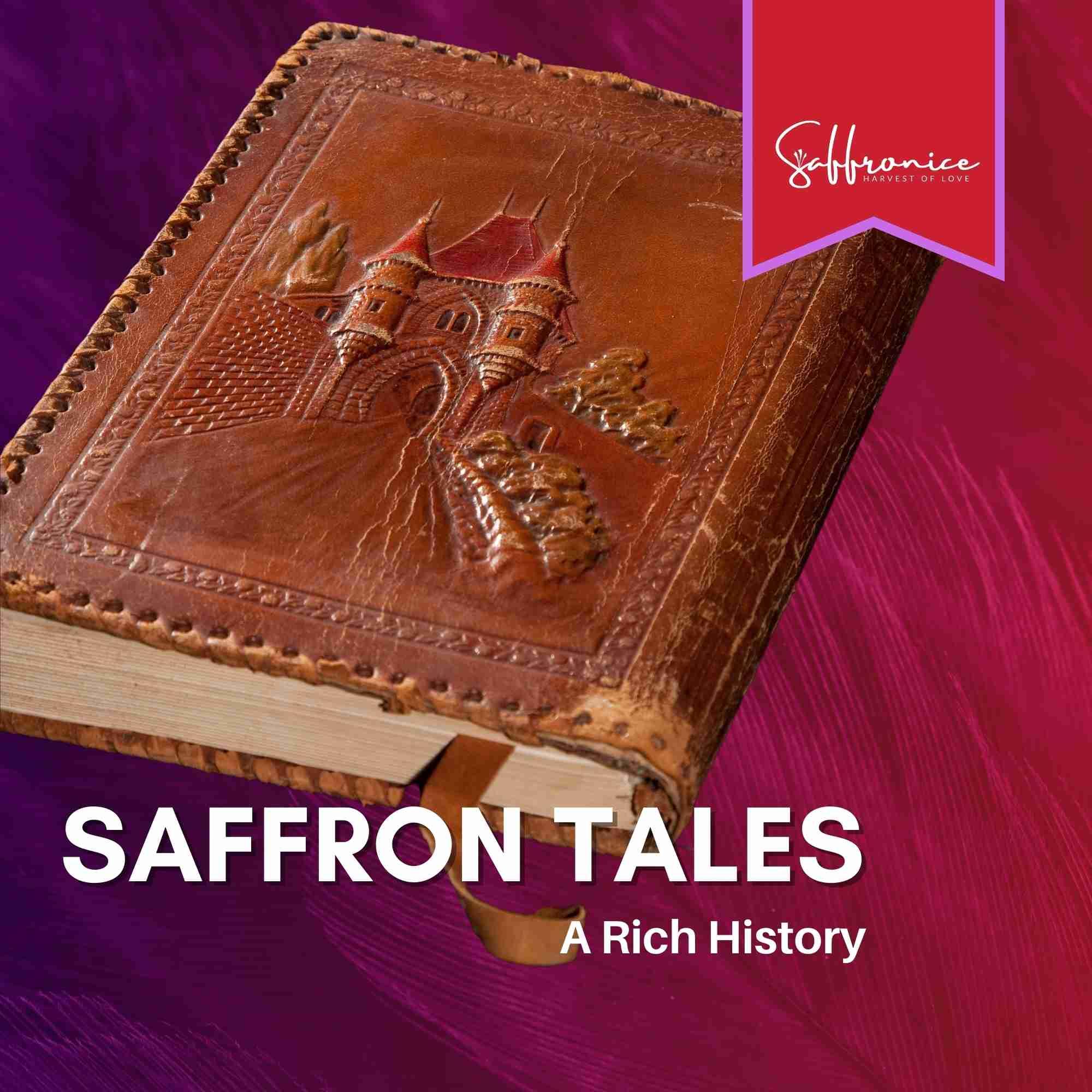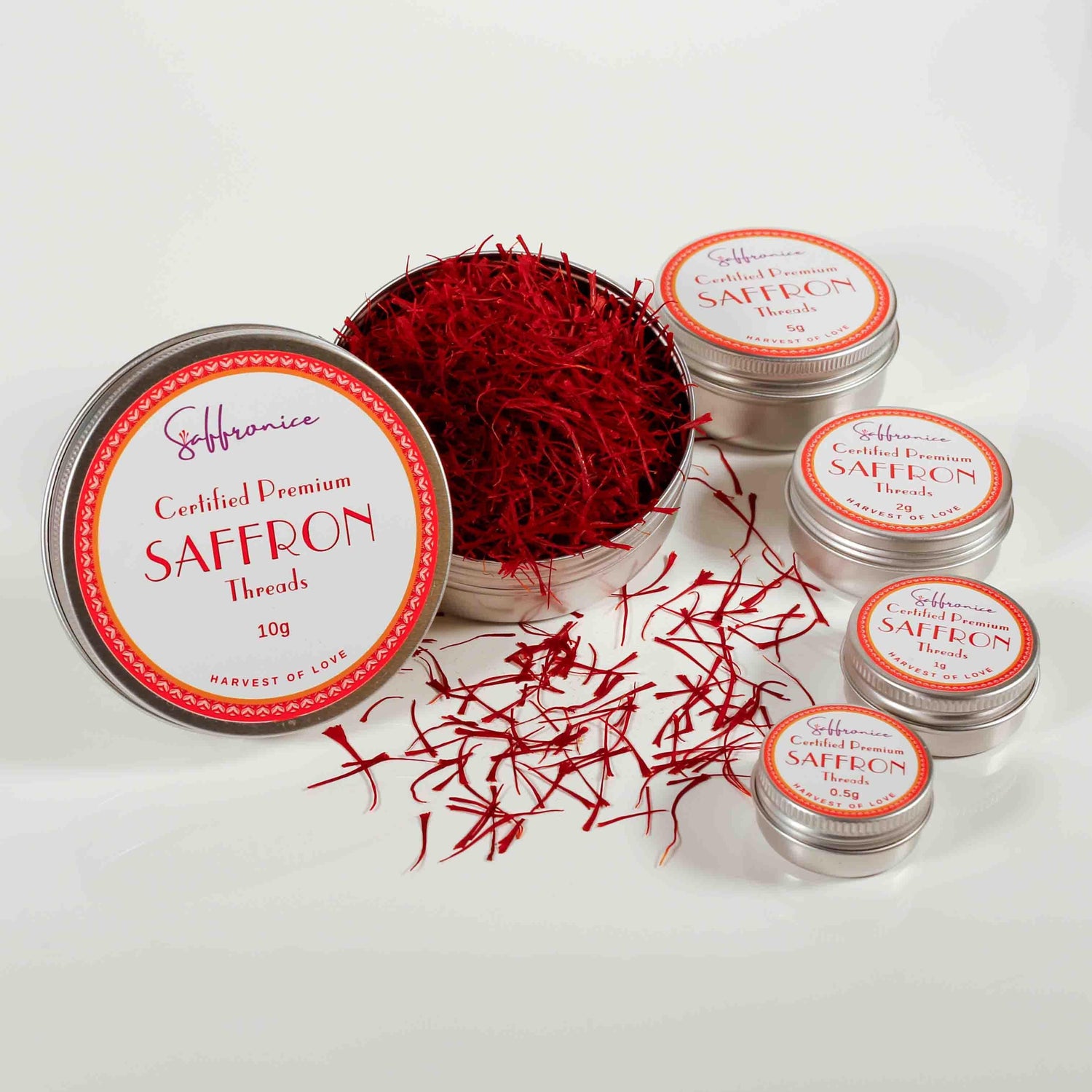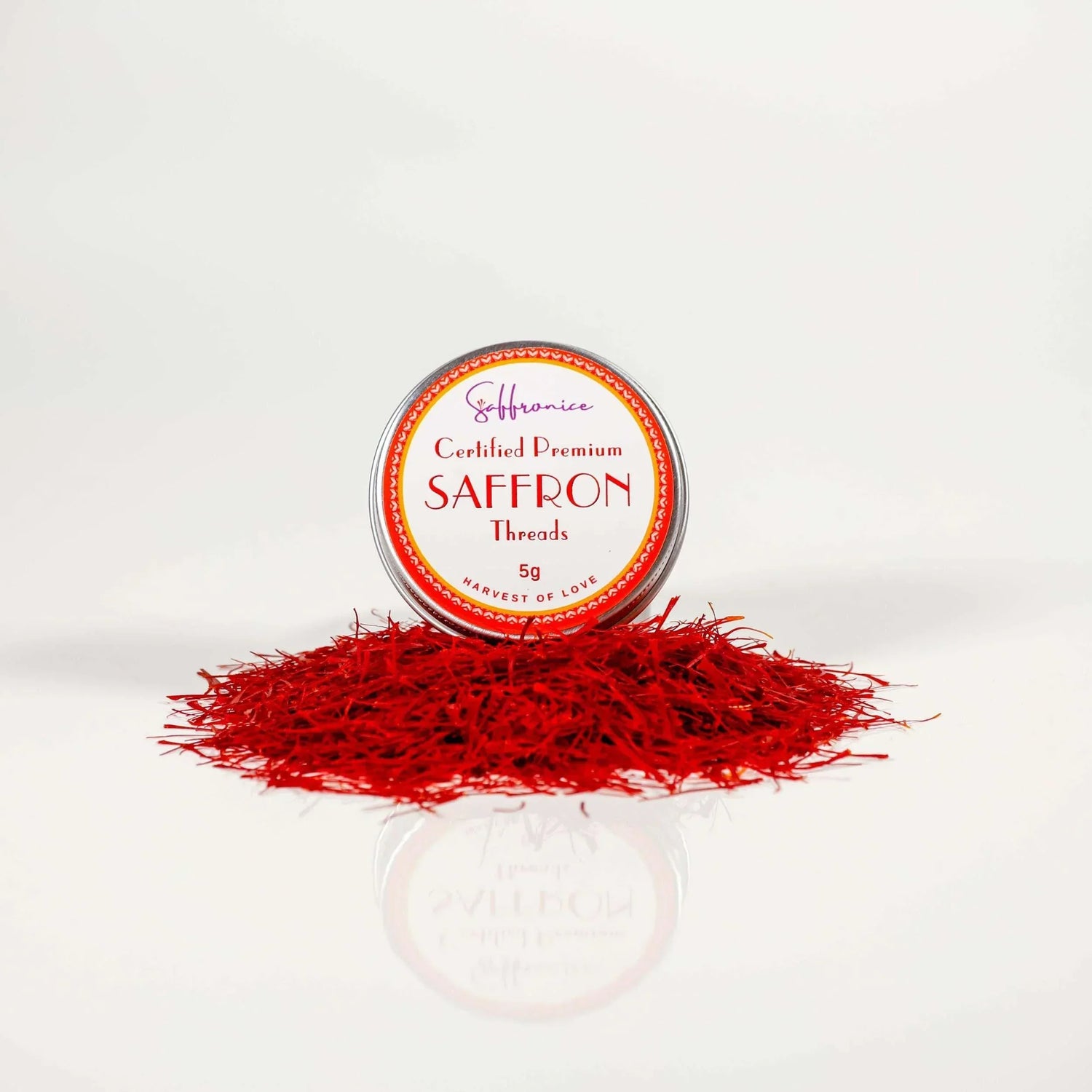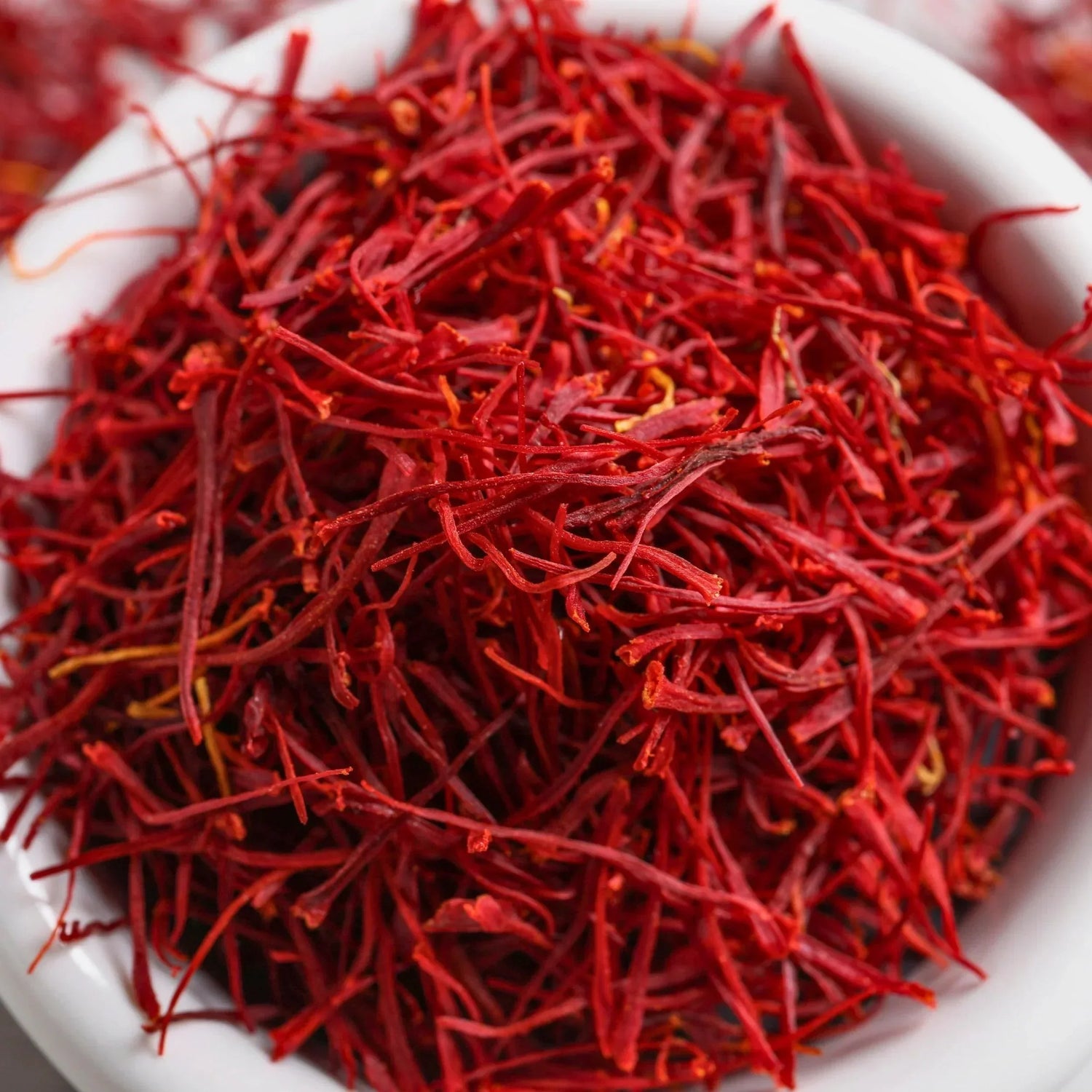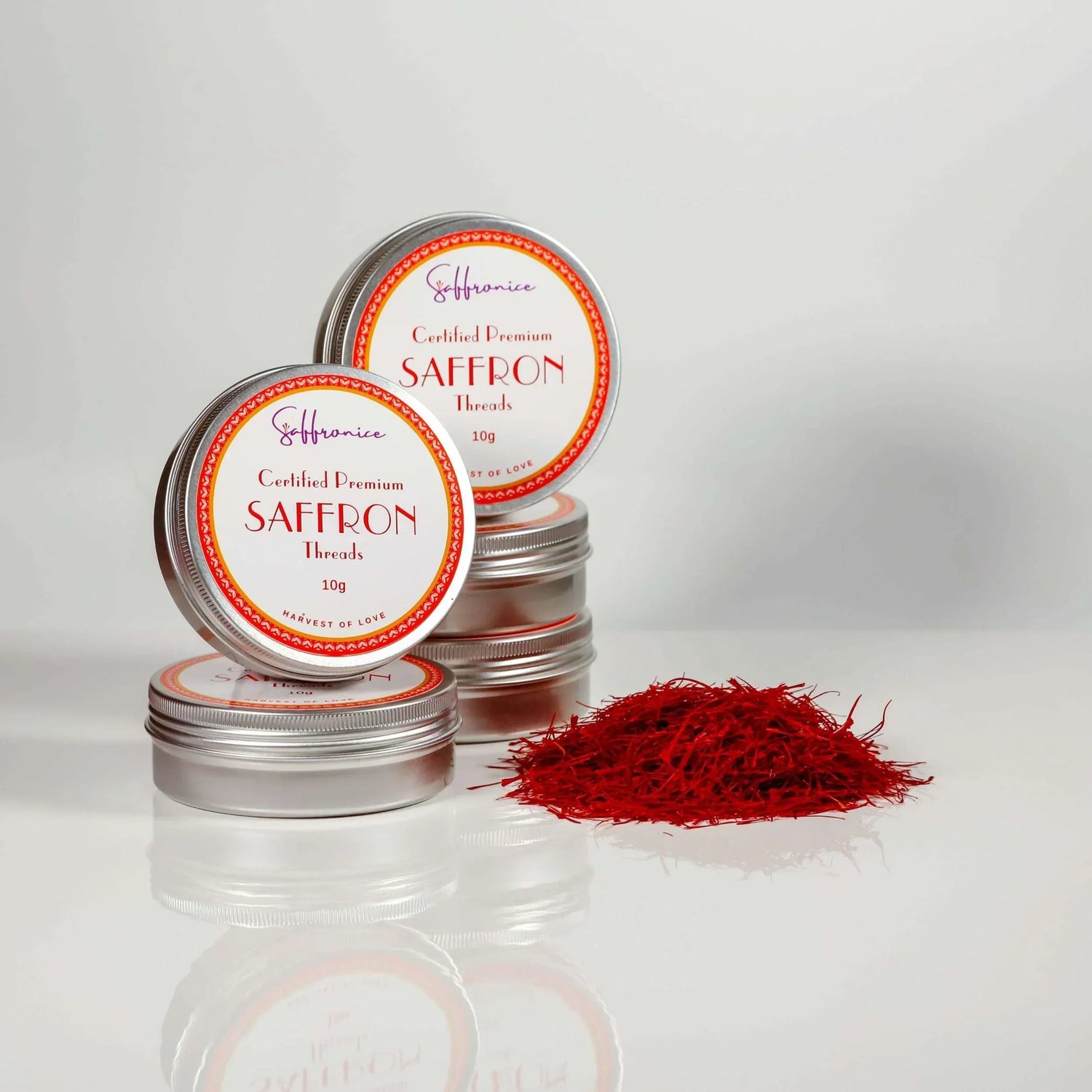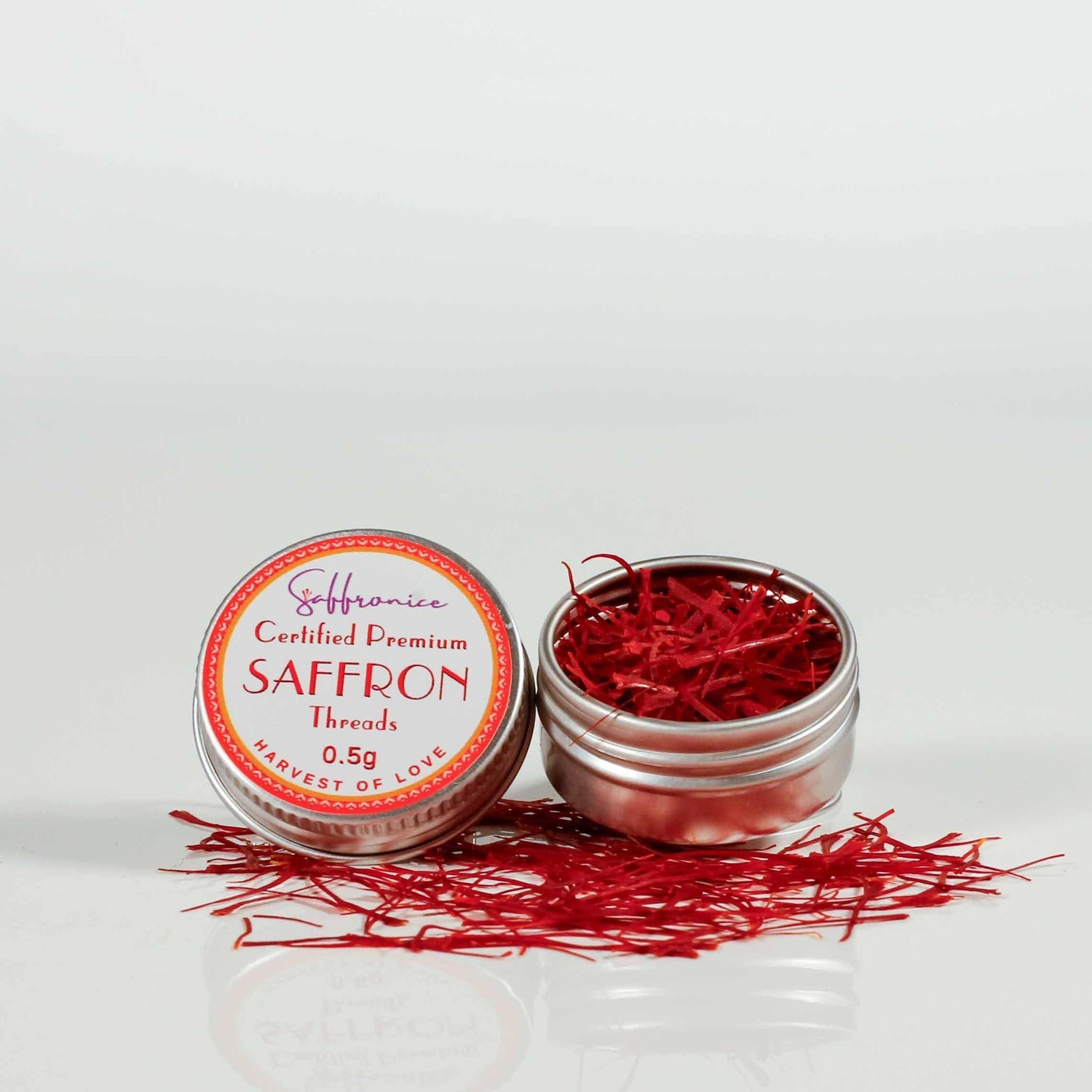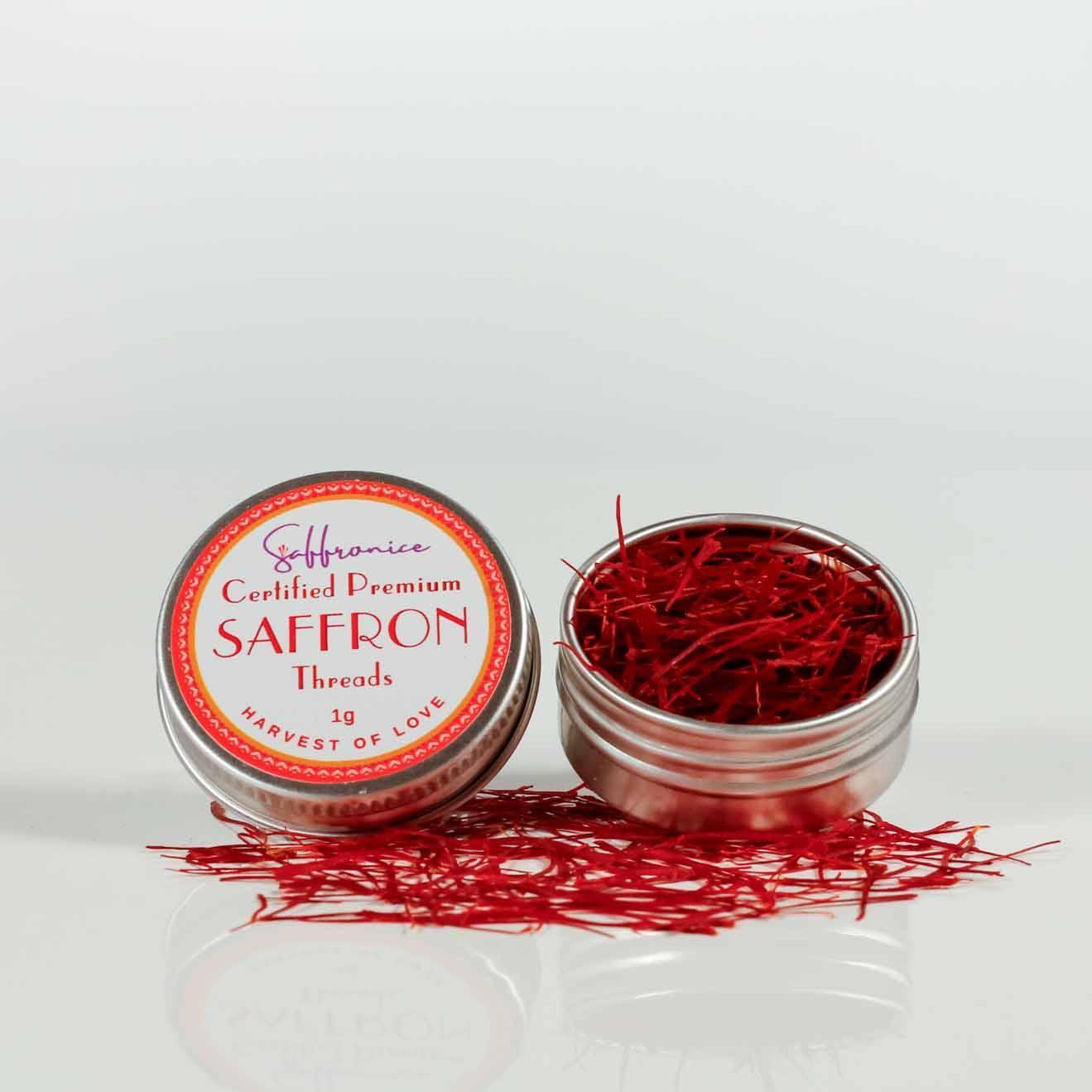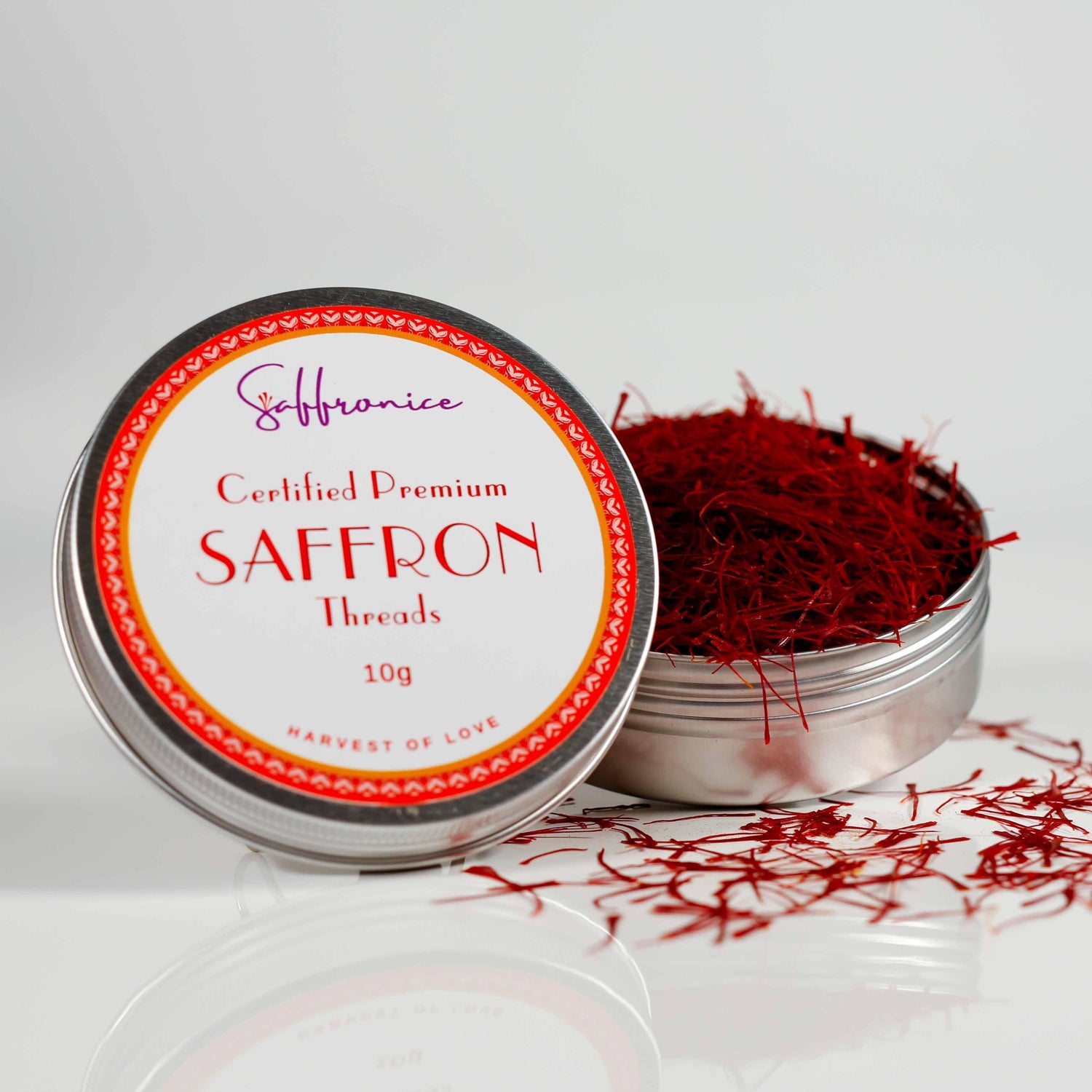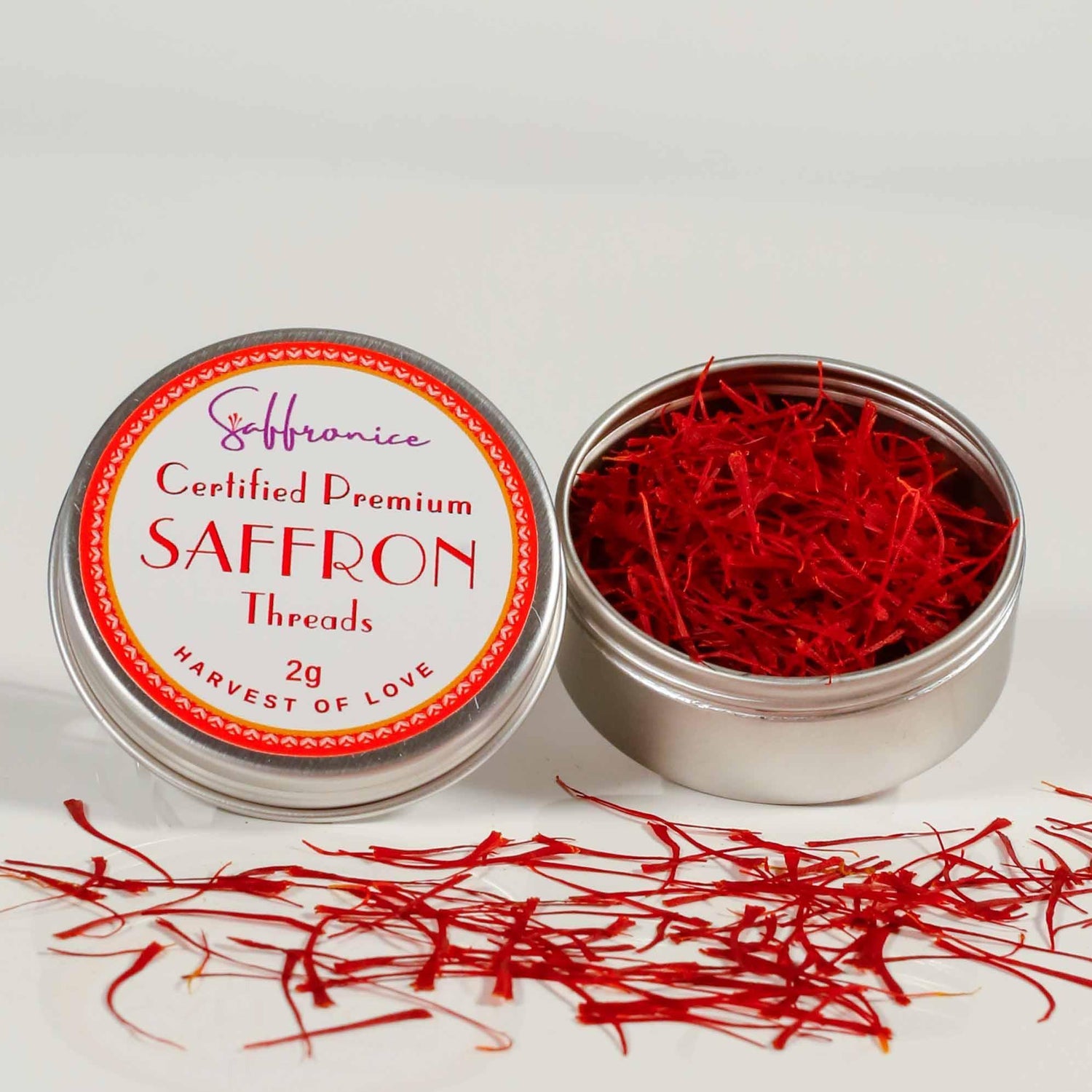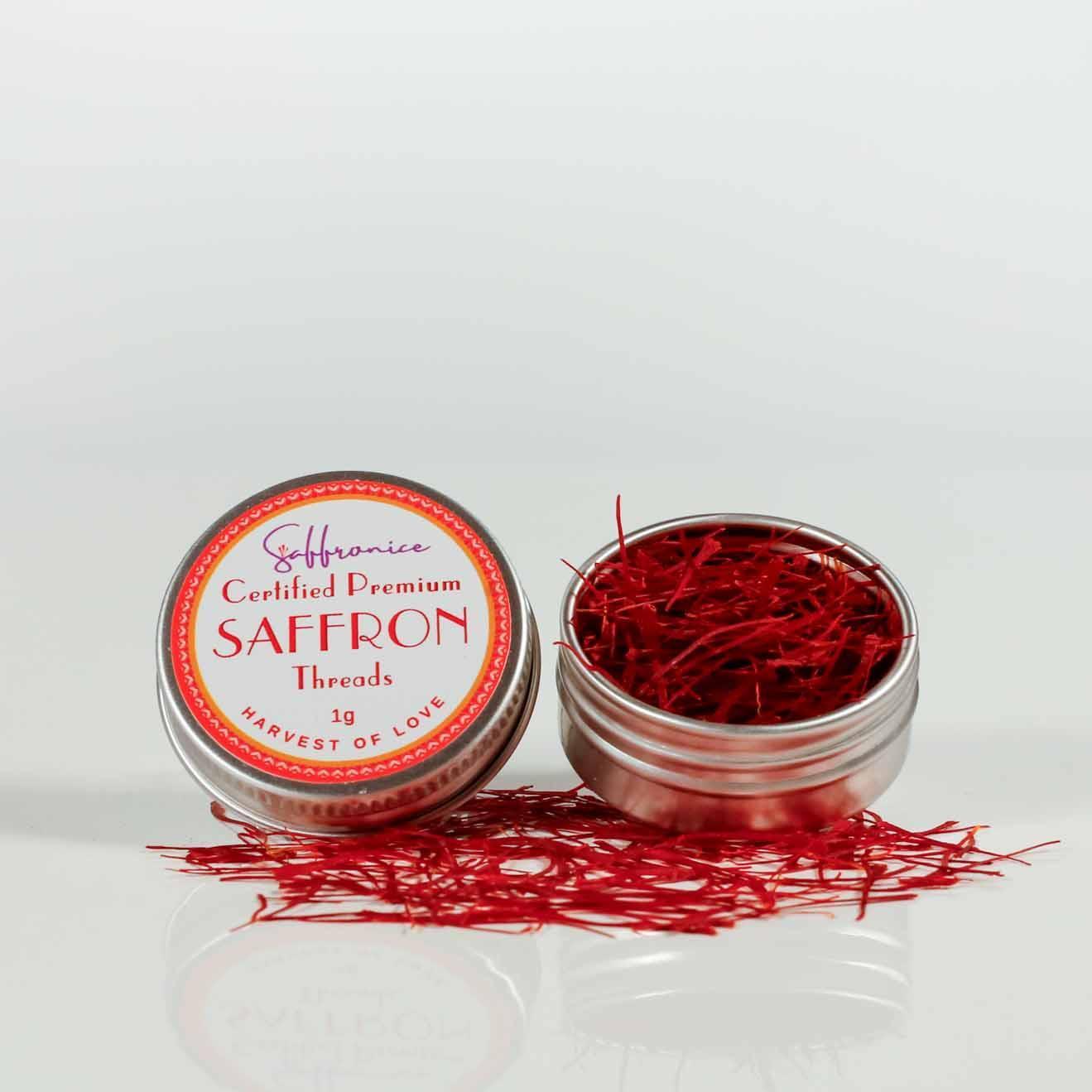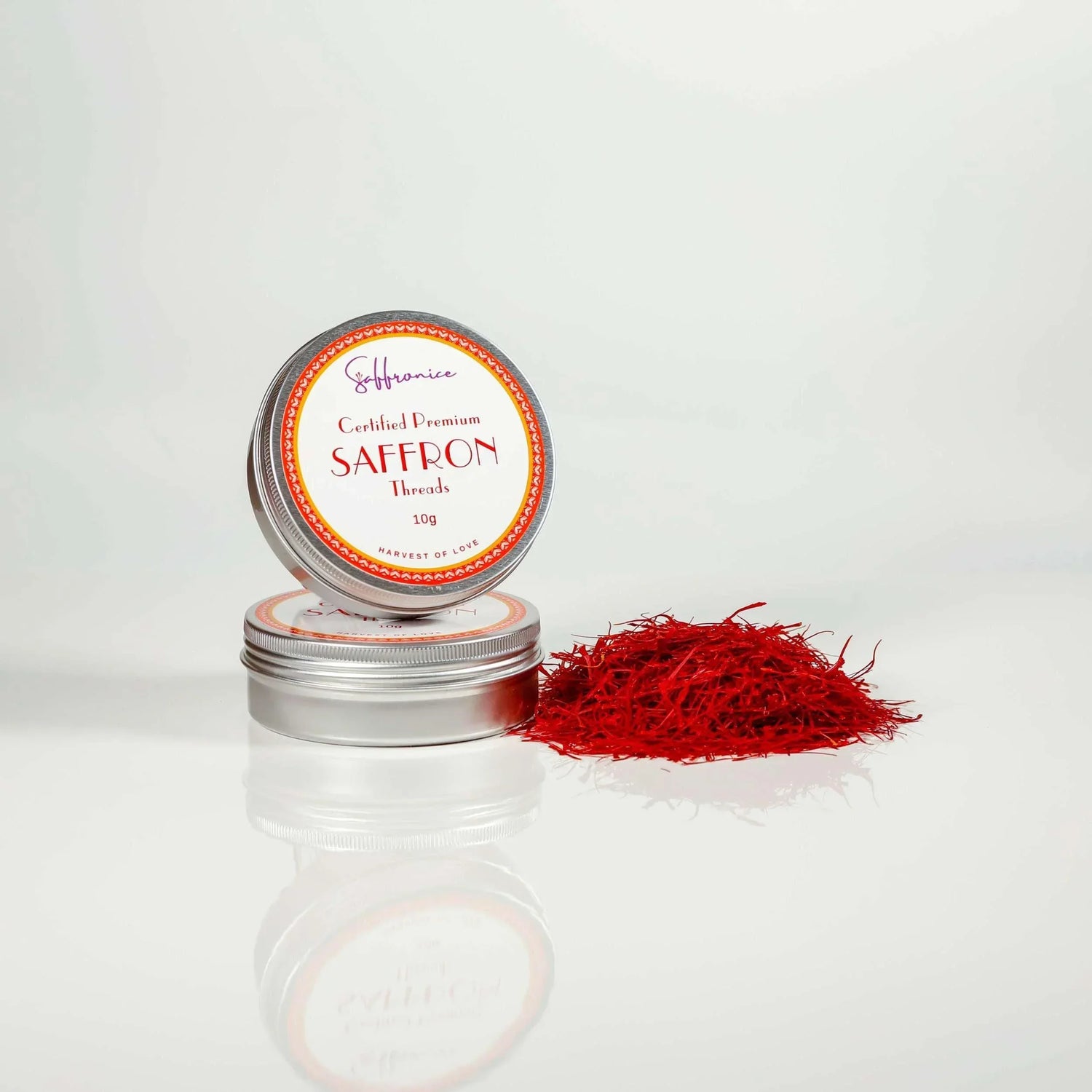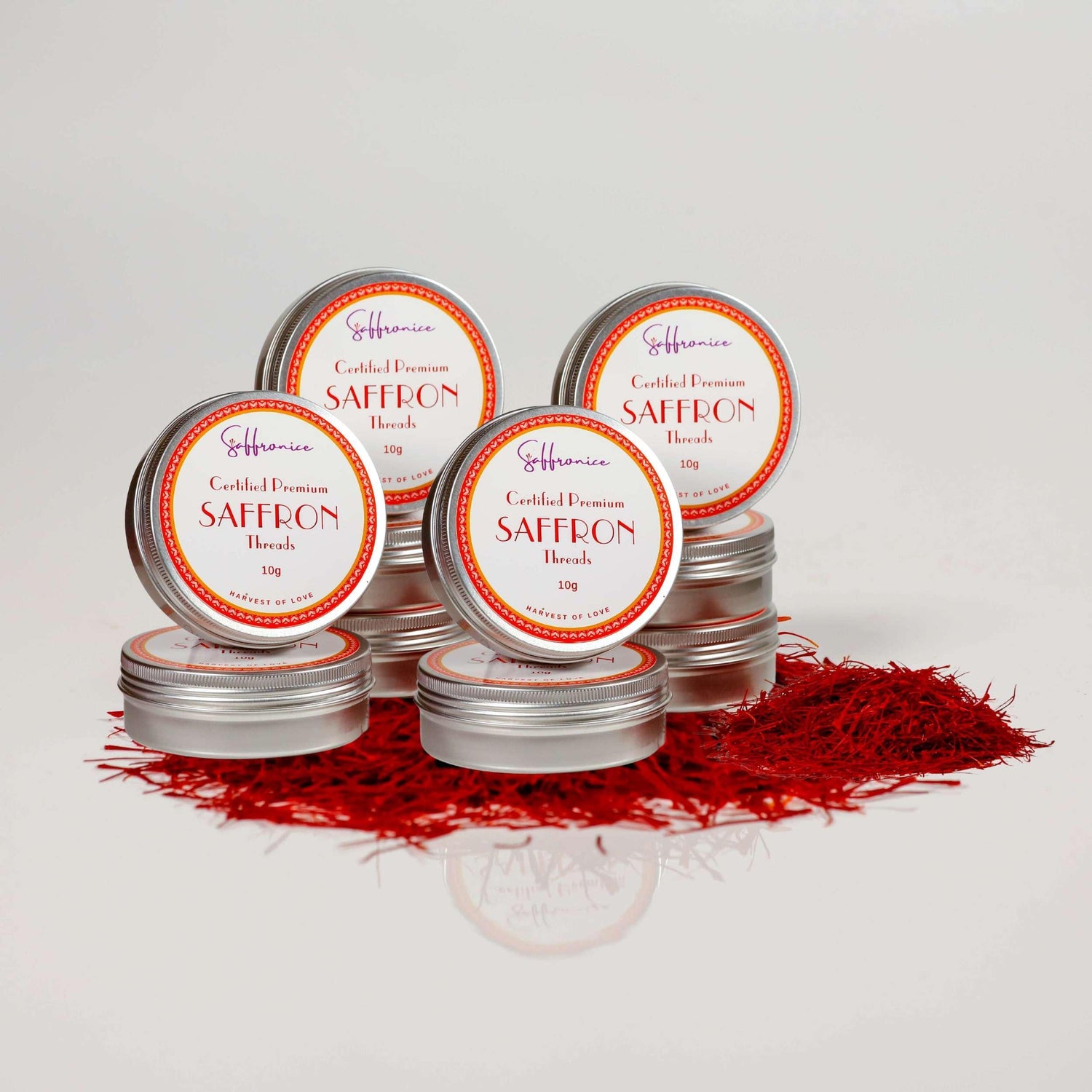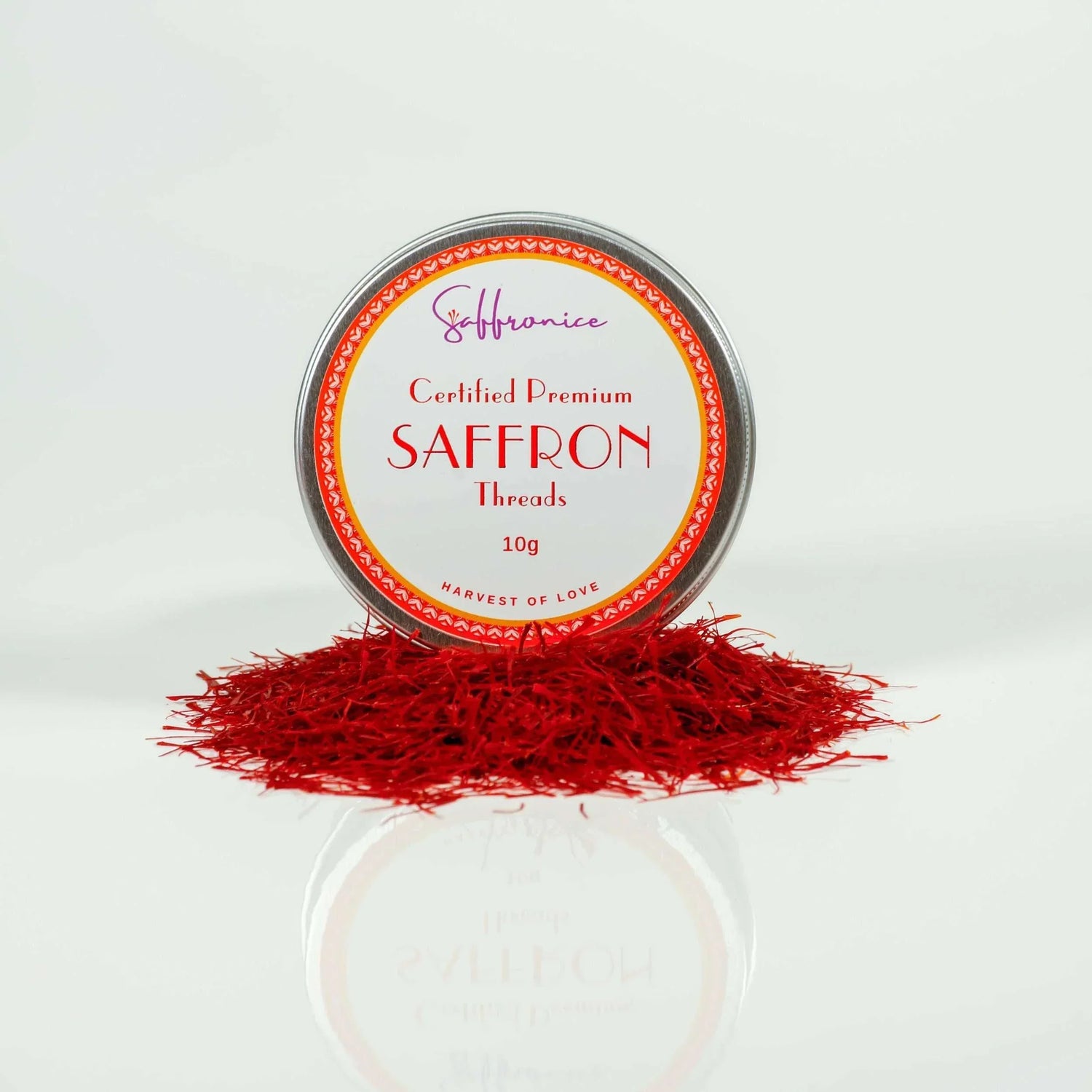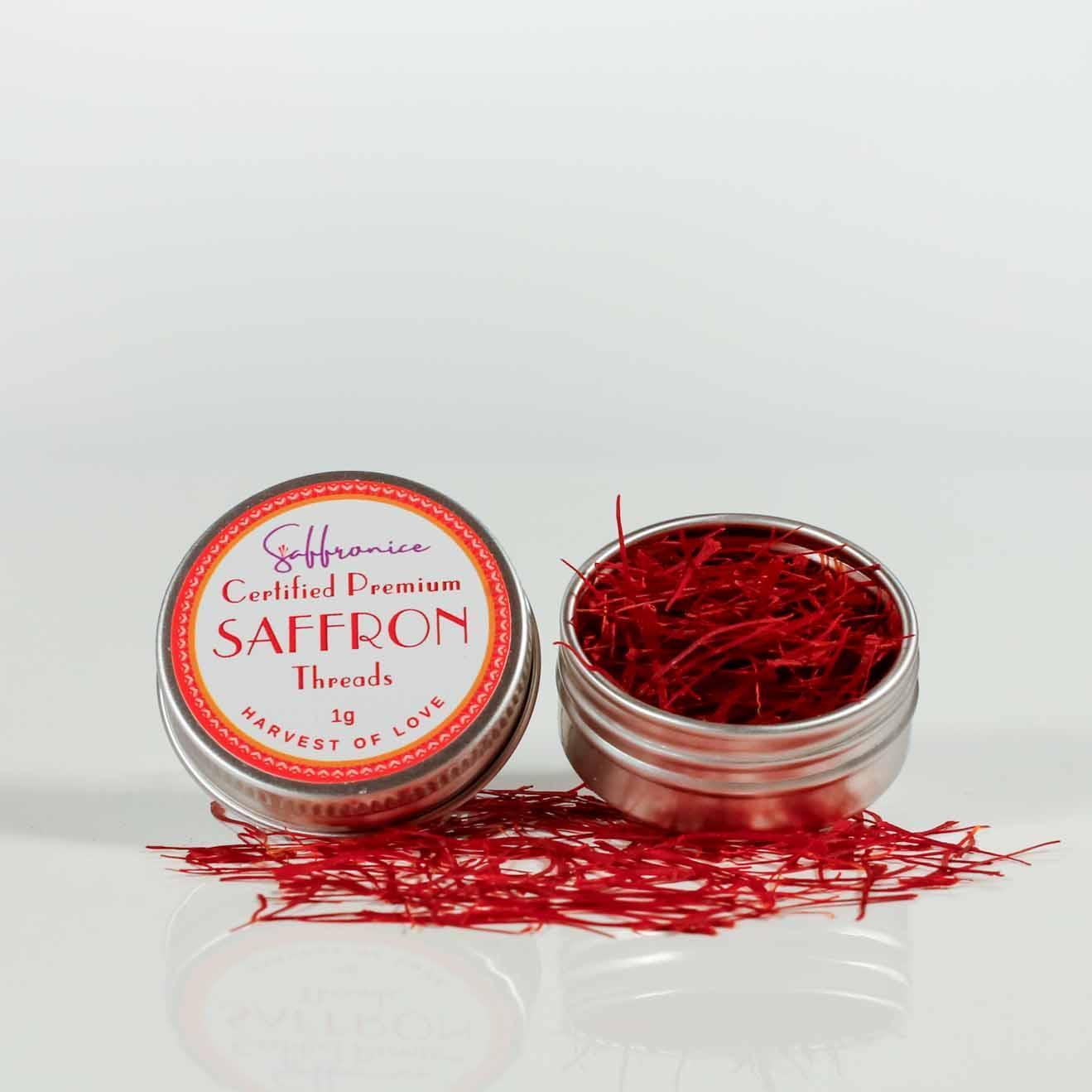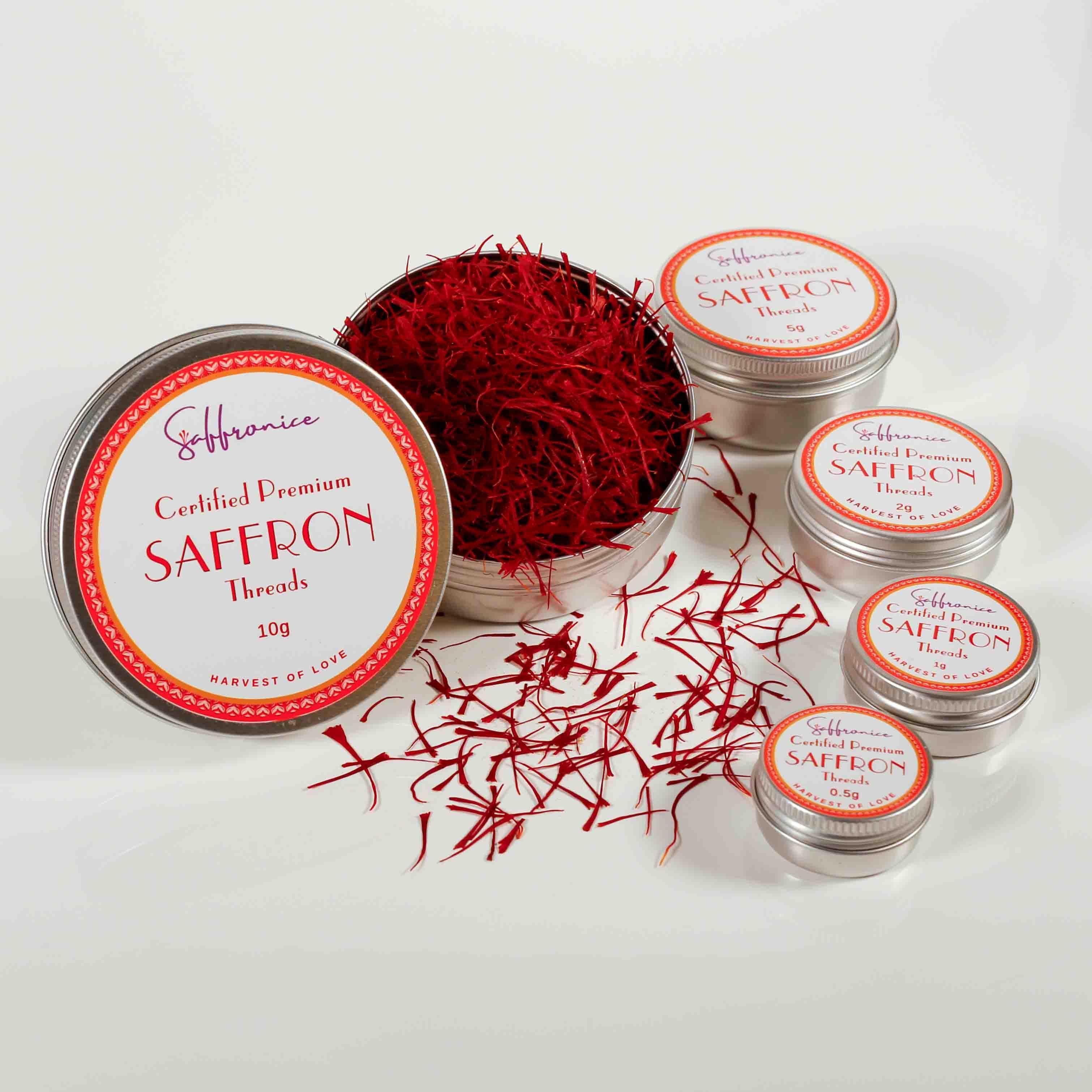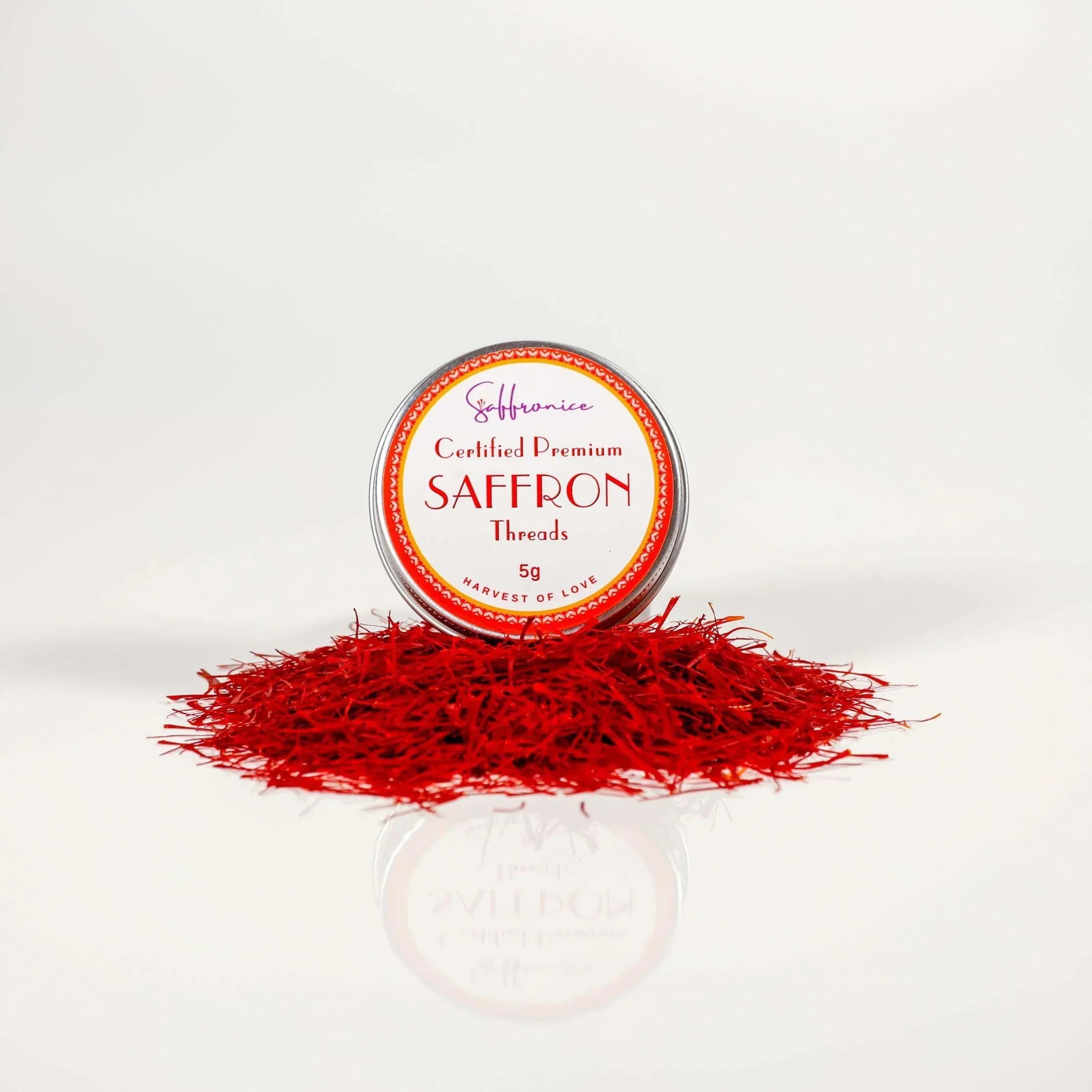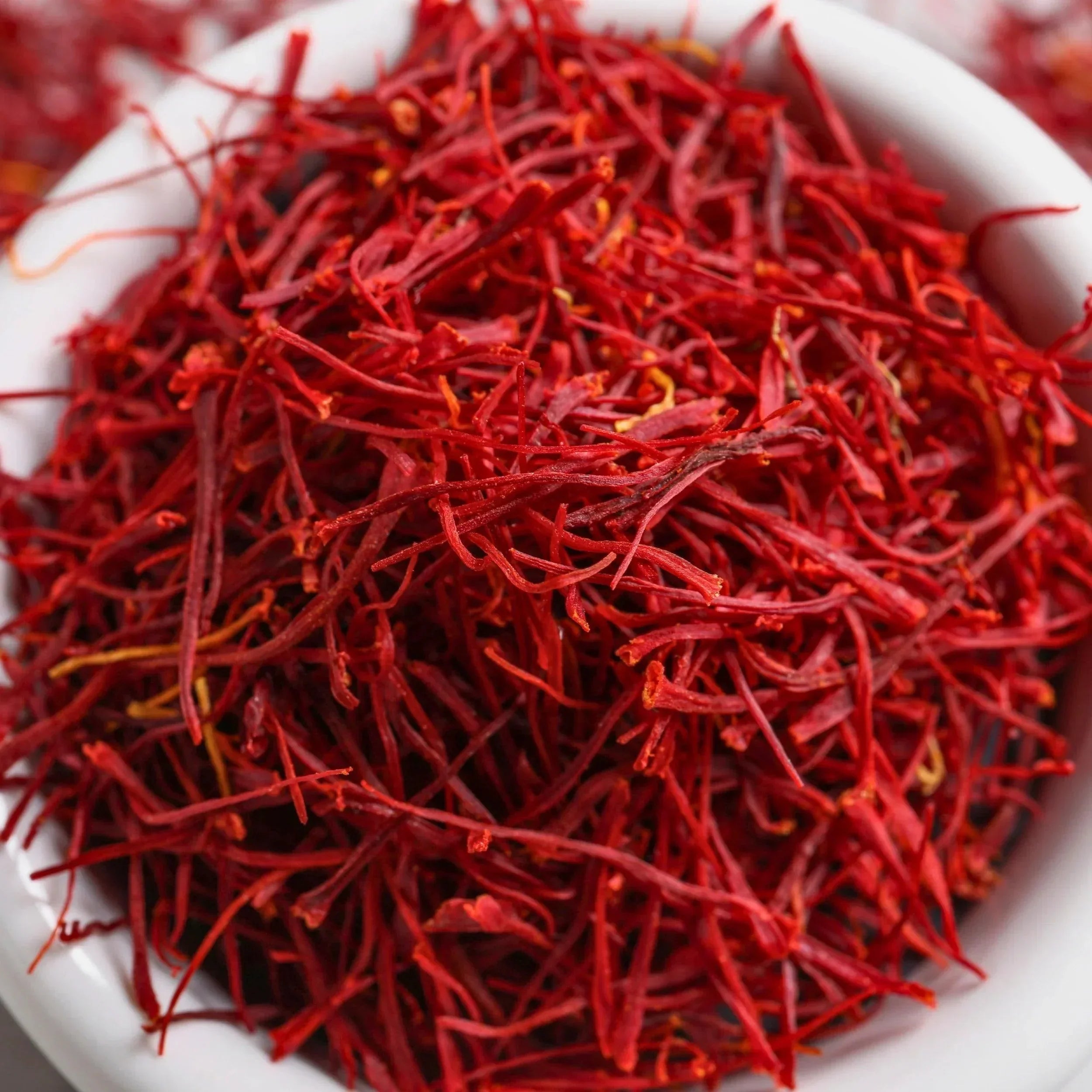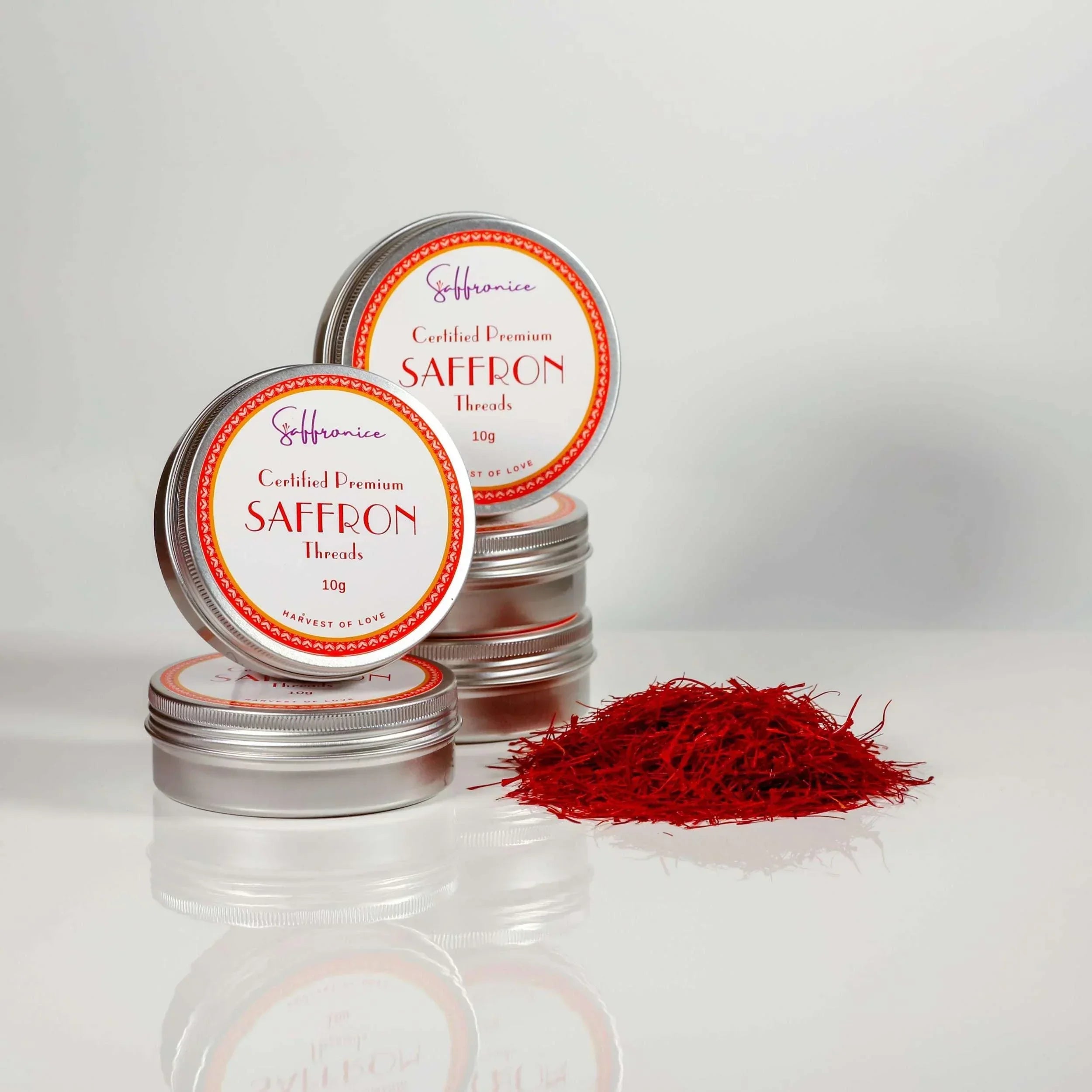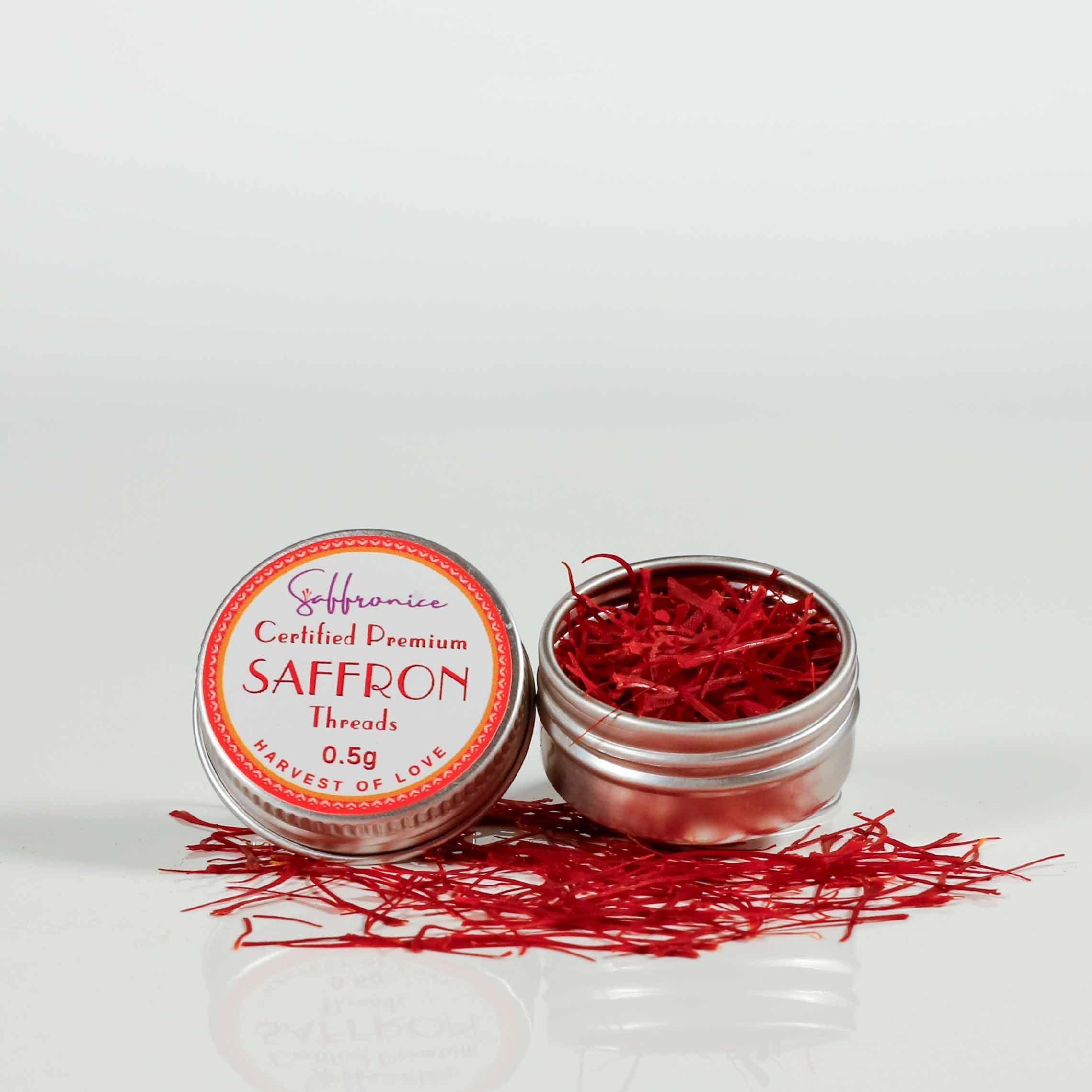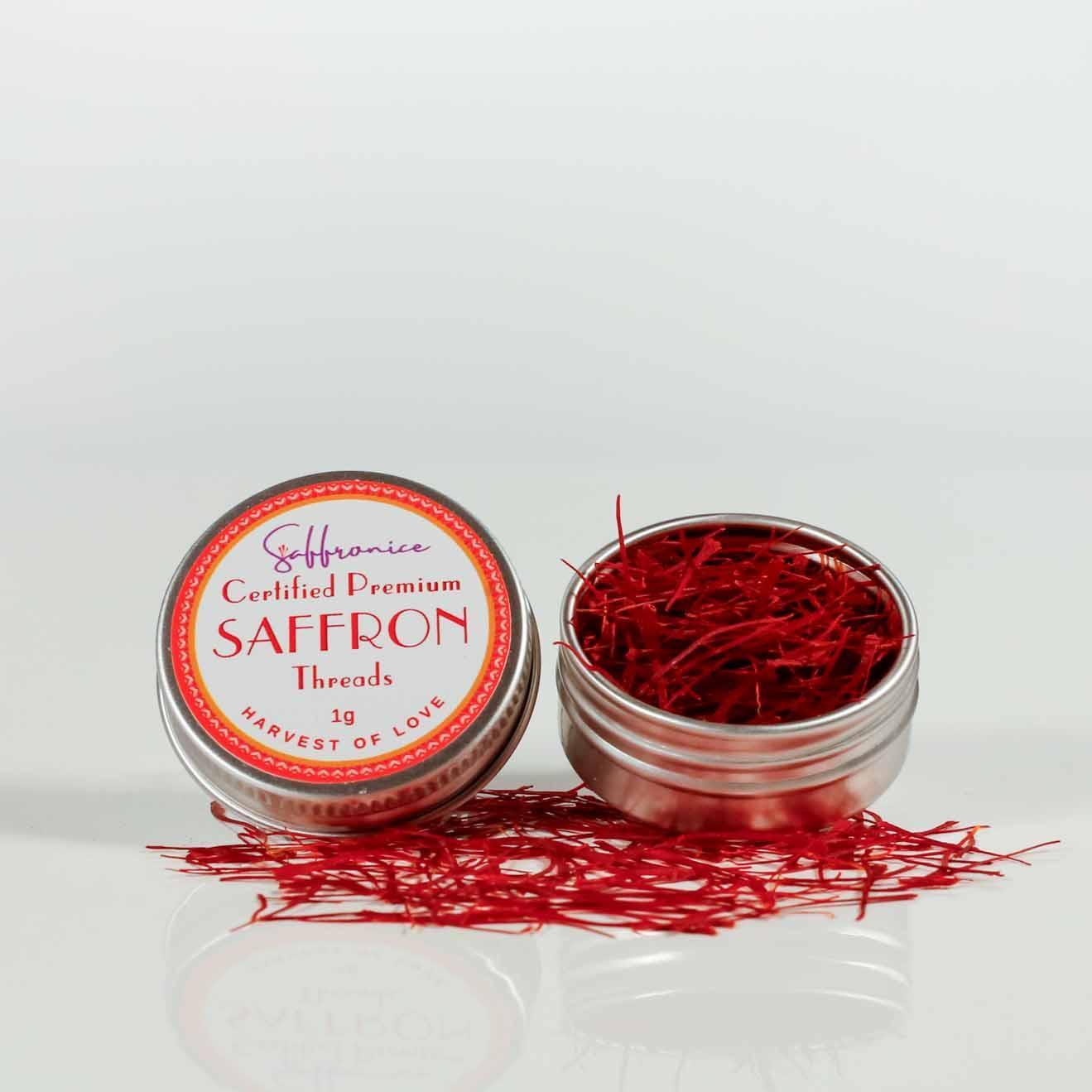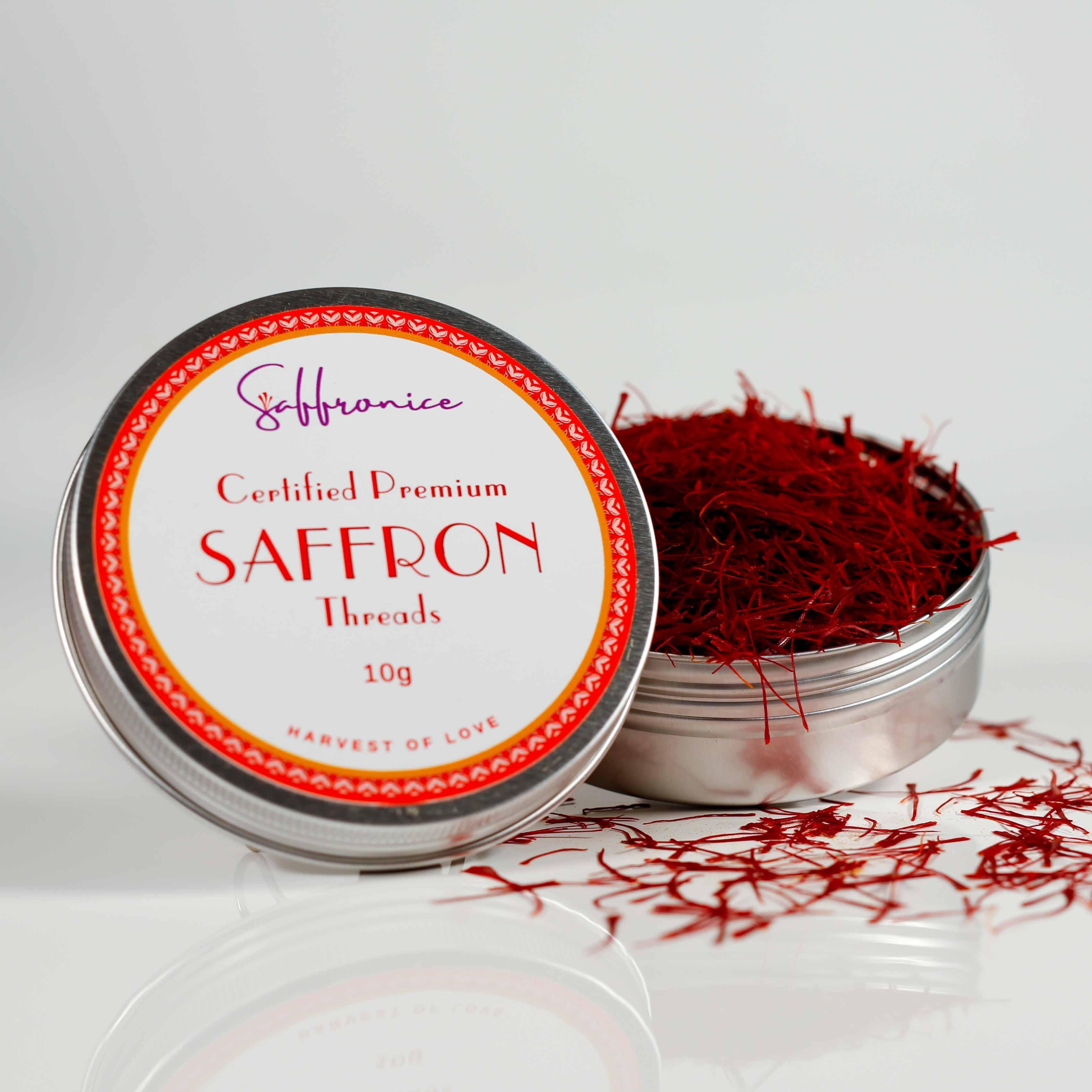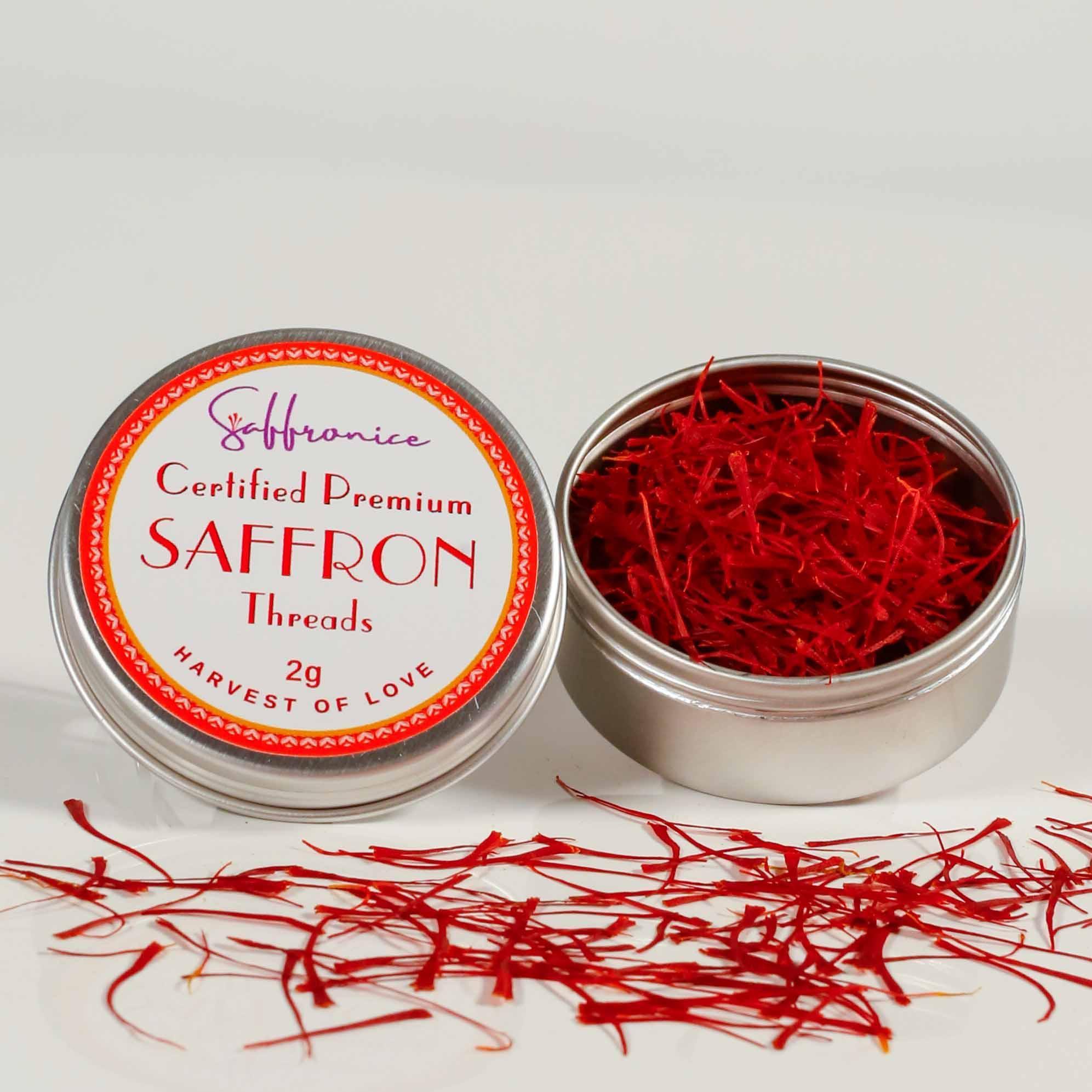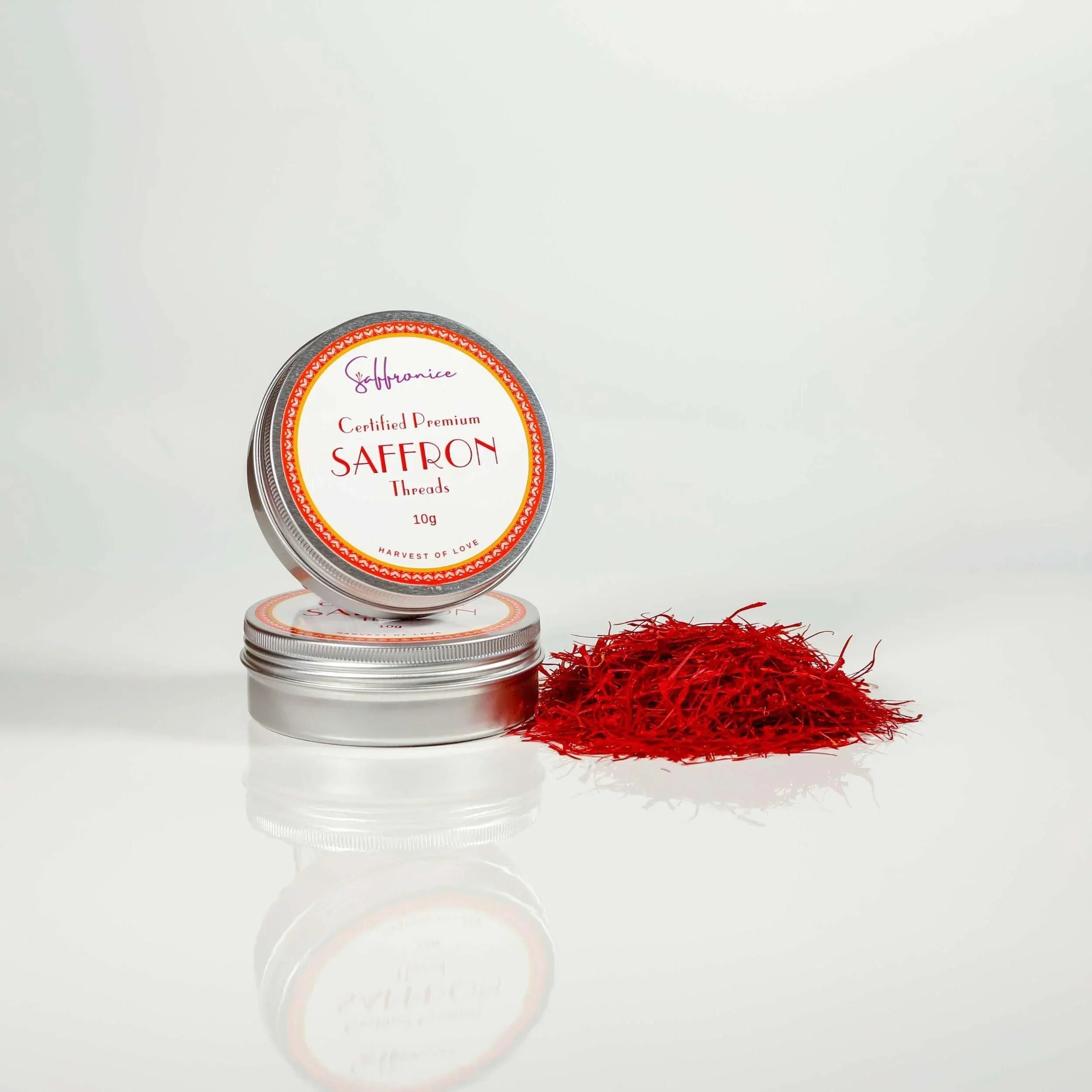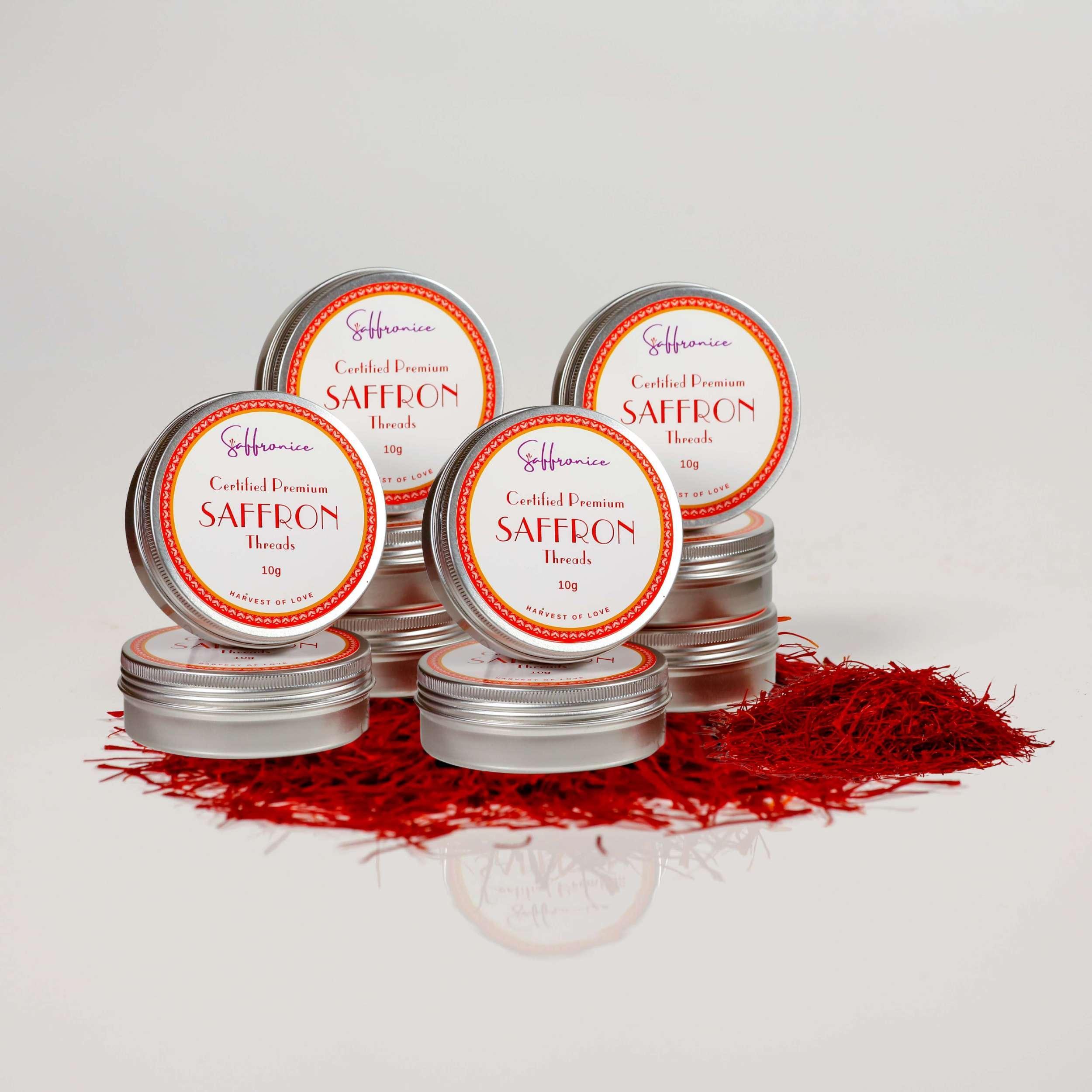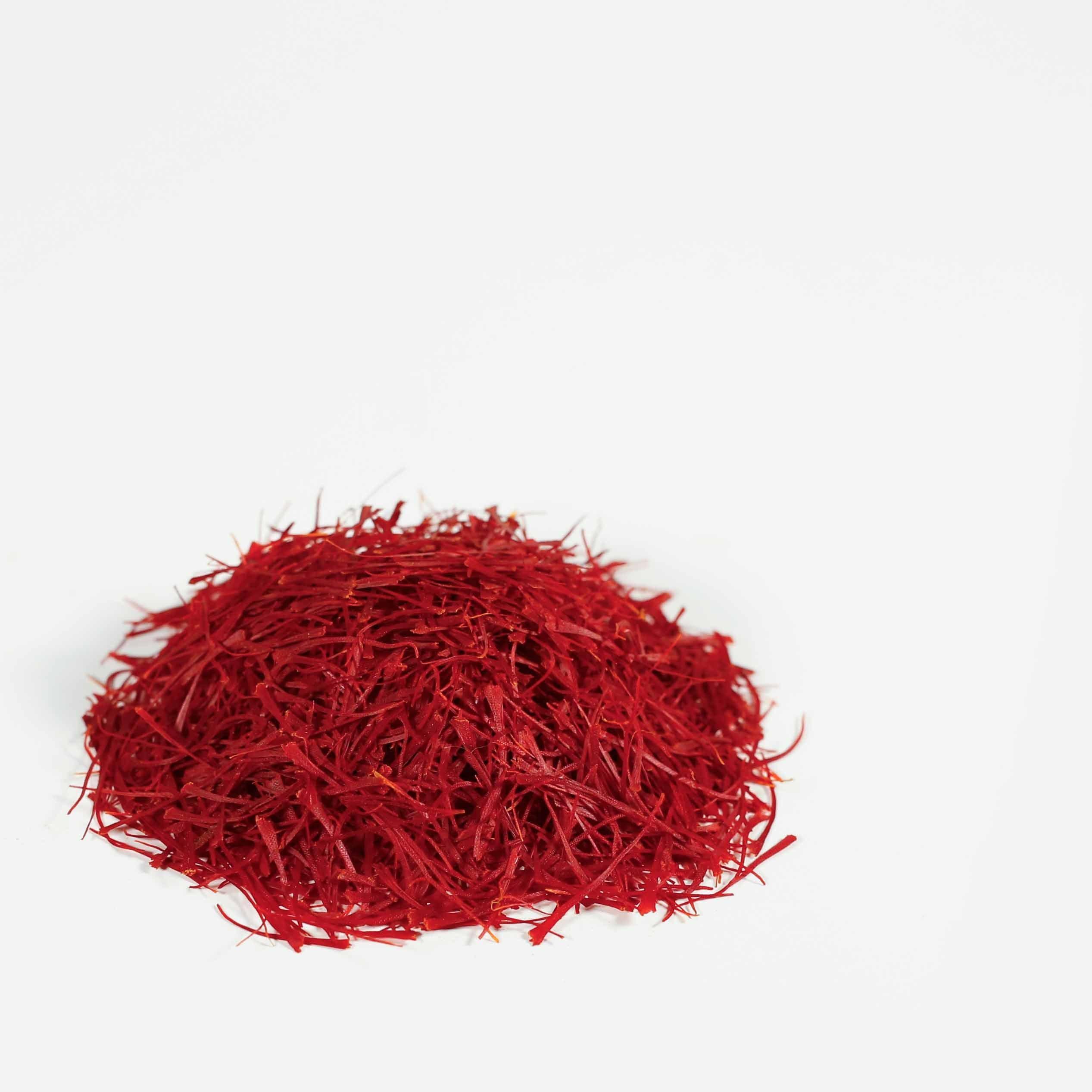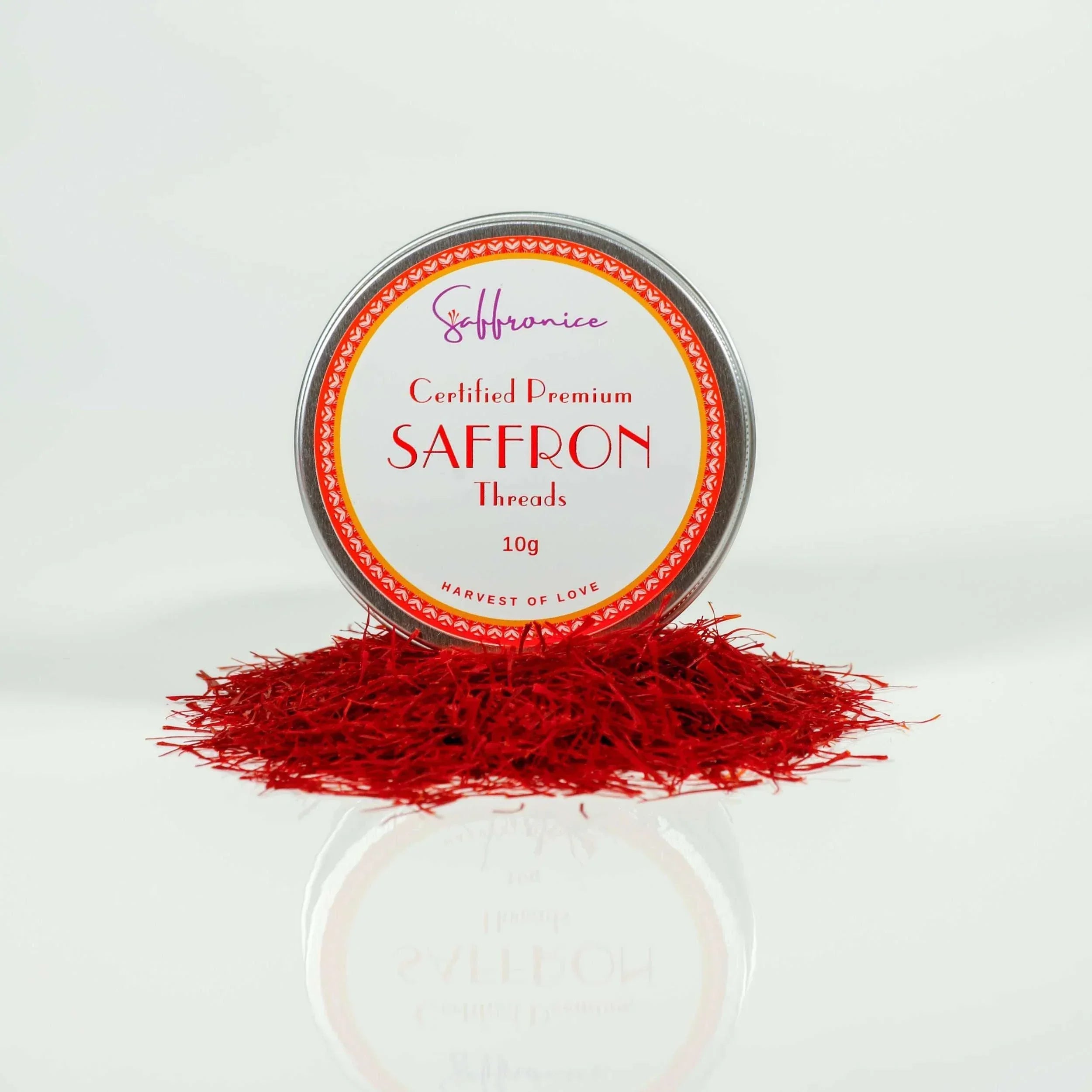Diving into the Colourful World of Saffron - A Spice Like No Other!
Hey there! Ready for an adventure into the world of saffron, a spice that's not just a kitchen favourite but a treasure trove of stories and secrets? Known affectionately as 'red gold', saffron is more than just a spice – it's a little bit of magic in our lives, with its unique charm and unmatched value.
Why Saffron is Just So Awesome
Picture this: tiny, vibrant red stigmas from the Crocus sativus flower, each one picked with care and love. These little guys are power-packed with an aroma that's a fabulous mix of earthy and sweet, a taste that's a cheeky dance of bitter and rich flavours, and a colour that turns your dishes into a sun-kissed delight. No wonder saffron is the superstar of spices!
Saffron's Journey: From Ancient Times to Your Kitchen

Saffron isn't just about spicing up your risotto; it's got a past that could rival any history novel. It's been a symbol of all things fancy and luxe, a key player in the trading game (especially in the Middle East), and a beloved ingredient in many cultural traditions. Saffron's story is like a mix of Indiana Jones and MasterChef, filled with tales of ancient trade routes, kingly feasts, and age-old healing potions.
Tag Along on Saffron's Historical Adventure
So, we're going to jump into the colourful world of saffron's past. We'll start in the Middle East, where it's not just a spice but a piece of history, and track its journey through trade and time. Whether you're a history geek, a foodie, or someone who loves a good story, there's something here for you.
Let's embark on this fun and flavourful journey together, uncovering the fantastic history of saffron. It's not just about learning; it's about being amazed at how this extraordinary spice has spiced up the world in more ways than one. So, grab your imaginary time machine (or just a comfy chair!) and let's get started on this exciting adventure, filled with anecdotes that are as colourful as saffron itself!
The Origins of Saffron - A Journey Back in Time
Let's hop into our time machine and zoom back to when saffron first made its grand entrance into the world. This isn't just about a spice; it's a trip to when civilisations were blooming, and saffron was their secret superstar!
Saffron's Debut in Ancient Civilisations

Did you know that the story of saffron began over 3,500 years ago? Ancient civilisations were pretty savvy when it came to this vibrant spice. The Minoans in Crete used it for its aroma and dyeing properties. Imagine those grand palaces and vivid frescoes - saffron had a hand (or a stigma) in that!
In ancient Egypt, saffron wasn't just a kitchen staple. Pharaohs and priests loved it too, using it in their religious ceremonies, as a perfume, and even in their medicines. Talk about a multi-tasking spice!
Saffron's Star Role in the Middle East
Now, let's zoom over to Persia, where saffron was more than just a spice – it was a cultural icon. The Persians adored it for everything from perfumes and dyes to a symbol of hospitality. There was even a time when threads of saffron were woven into royal carpets and used in the luxurious baths of kings and queens. Talk about bathing in luxury!
Digging Up Saffron's Past
Archaeologists have had a field day uncovering the secrets of saffron. There's evidence everywhere, from ancient frescoes in Santorini showing saffron harvests to references in legendary texts like the 'Anabasis' by Xenophon. These ancient texts and artefacts are like saffron-scented pages of history, telling us about trade, luxury, and the everyday life of ancient people.
And let's not forget the botanical evidence. Saffron comes from the Crocus sativus flower, and scientists have traced its wild ancestors back to Greece and Southwest Asia. It's like a detective story where the clues are tiny, fragrant, and golden-red!
So there you have it, the origin story of saffron. It's a tale of ancient glamour, everyday life, and a spice worth its weight in gold. From the frescoes of Crete to the luxury of Persian baths, saffron has been making history more colourful and fragrant for thousands of years!
Saffron in Ancient Trade - The Spice that Traveled the World
 Now, let's set our sights on Saffron's role in ancient trade, where it wasn't just a spice but a symbol of wealth and a medium of exchange. Buckle up, we're about to see how this tiny spice made some big moves on the world stage!
Now, let's set our sights on Saffron's role in ancient trade, where it wasn't just a spice but a symbol of wealth and a medium of exchange. Buckle up, we're about to see how this tiny spice made some big moves on the world stage!
Saffron on the Silk Road - A Journey of Flavour and Fortune
Picture the Silk Road, not just a route but a sprawling network of paths connecting the East with the West. Alongside silk, jewels, and exotic fruits, there was saffron, the superstar spice, travelling from distant lands to end up in markets and palaces across the globe. Saffron was like the VIP of ancient trade, valued not only for its culinary uses but also for its rarity and the labour-intensive process of harvesting it. This made saffron a luxury item, a treasure that traders carried along these routes, spreading its allure far and wide.
Building Bridges Between Civilisations Through Saffron Trade
The trade of saffron wasn't just about buying and selling; it was a cultural exchange. As saffron travelled, it carried with it stories, traditions, and culinary secrets. This spice played a part in connecting different civilisations, from the ancient Greeks and Romans, who used it for gourmet dishes and medicinal purposes, to the Chinese emperors, who were said to be fascinated by its exotic origins and healing properties. The saffron trade was a thread in the fabric of cross-cultural relationships, bringing people and cultures together in the most aromatic way possible.
Middle East - The Heart of Saffron Trade
Now, let's zoom into the Middle East, the hub of the saffron trade. Places like Persia (modern-day Iran) were not just producers but the epicentres of the saffron trade. Cities like Isfahan and Tehran became synonymous with the finest quality saffron, attracting traders from far-off lands. These markets were not just places of commerce; they were cultural melting pots where saffron was the star. In these bustling bazaars, deals were struck, recipes were exchanged, and the love for this golden spice was shared.
In summary, saffron's journey along the ancient trade routes was like a grand odyssey, touching lives and cultures. It was more than a commodity; it was a passport that allowed people, ideas, and cuisines to traverse continents. The historical trade centres in the Middle East weren't just markets; they were the stages where the drama of ancient trade unfolded, with saffron playing a leading role. And what a spectacular role it was – a spice that didn't just add flavour to dishes but also spiced up the pages of history!
Cultural Significance of Saffron - More Than Just a Spice
Ah, now we're venturing into the vibrant tapestry of culture and tradition where saffron isn't just a kitchen staple but a symbol steeped in meaning. Let's discover how this extraordinary spice has woven its way into the very fabric of various cultures, especially in the Middle East.
Saffron in Middle Eastern Rituals and Practices

In the Middle East, saffron has always been more than a flavour enhancer. It's a part of the cultural soul. For instance, in Persian culture, saffron is synonymous with hospitality. It is often used in traditional dishes served to guests as a sign of respect and warmth. During Nowruz, the Persian New Year, saffron plays a central role in the preparation of special dishes, symbolising the brightness and joy of life.
In other parts of the Middle East, saffron has been used in wedding ceremonies for its aroma and as a symbol of good fortune and fertility. A bride's trousseau would often be scented with saffron, and dishes served at weddings would almost always have a hint of saffron to bless the new couple.
Saffron's Divine Connection - From Temples to Medicine Cabinets
Saffron's use in religious ceremonies across various faiths is a testament to its revered status. In some traditions, it's used to dye priests' robes, signifying purity and sacrifice. Saffron's presence in religious texts and artifacts points to its deep-rooted significance in spiritual practices.
But saffron's magic isn't limited to spiritual realms. Its medicinal properties have been celebrated for centuries. Ancient medical texts from the Middle East mention saffron as a treatment for everything from heart ailments to melancholy. This isn't just old wives' tales – modern science has begun to back up many of these claims, giving saffron a legitimate place in traditional and contemporary medicine.
Folklore and Tales - Saffron's Starring Role

Every spice has its story, and saffron has many. In the folklore of the Middle East, saffron often appears as a symbol of light and wisdom. Tales of djinns being appeased with saffron or quests involving the spice are common in traditional storytelling. These tales passed down through generations are not just stories but a way of preserving saffron's cultural and mystical importance.
In summary, saffron's role in cultural practices, religious ceremonies, medicine, and folklore isn't just about tradition. It's about how a single spice can be interwoven into the very essence of people's lives, becoming a symbol of joy, health, and prosperity. It's a reminder that sometimes, the most extraordinary stories come from the most humble sources – like a tiny saffron thread, bringing colour, flavour, and magic into our lives.
Saffron's Journey to Europe - The Spice that Conquered a Continent
Let's now trace the vibrant path of saffron as it made its grand voyage from the sun-drenched fields of the Middle East to the diverse and rich landscapes of Europe. This journey isn't just about miles travelled; it's a tale of how a single spice can weave its way into the heart of entire cultures.
The Spice Route from the Middle East to Europe
Saffron's journey to Europe is like an epic tale, filled with traders, adventurers, and botanists, all playing their part in bringing this treasured spice to new lands. It's believed that saffron first arrived in Europe through the Greek and Roman empires. Fascinated by its aroma and colour, these ancient civilisations began to cultivate and use saffron extensively, both in their kitchens and for their medicinal properties.
The spice then travelled through the Mediterranean, mainly through trade routes established by the Moors, who introduced saffron to Spain. The cultivation of saffron flourished in regions like La Mancha, which is known today for producing some of the finest saffron in the world.
Transforming European Cuisines and Cultures

Saffron didn't just add flavour to European dishes; it transformed them. From the saffron-infused risotto in Italy to the heavenly bouillabaisse in France, saffron became a gastronomic luxury and sophistication symbol. In countries like Sweden, saffron became integral to holiday baking, adding its golden touch to traditional saffron buns.
But it wasn't just about taste. Saffron brought a touch of the exotic, a hint of far-off lands and cultures. It became a bridge between the East and the West, adding a new layer to European culinary and cultural identities.
Influential Figures in Saffron's European Story

Throughout history, several key figures have played a role in popularising saffron in Europe. One such figure was Alexander the Great, who used saffron for its healing properties, bathing his wounds in saffron-infused water. In the medieval period, saffron was a favourite of the nobility and royalty and used to display wealth and status.
Even in the world of art, saffron made its mark. The famous botanical artist Leonardo da Vinci is said to have used saffron as a pigment in his paintings, attracted by its brilliant hue.
In conclusion, saffron's journey to Europe is a story of more than just trade and cultivation. It's about how a small spice can leave a lasting imprint on entire cuisines and cultures, becoming a part of the shared heritage of the East and West. From ancient fields in the Middle East to the heart of European gastronomy, saffron has indeed come a long way, painting the world in its unique shade of gold.
Modern Saffron Trade - Navigating the Contemporary Spice Market
Fast forward to the present, and saffron continues to hold its sway in the global spice market. It's a journey from ancient trade routes to modern economies, from being a coveted treasure of the past to a sought-after commodity of today. Let's delve into the intriguing world of modern saffron trade.
The Current State of Saffron Trade
Today, the saffron trade is a fascinating mix of tradition and modern commerce. It remains one of the most expensive spices in the world, primarily due to the labour-intensive process of harvesting the saffron crocus. Despite technological advancements in agriculture, the harvesting of saffron still requires the human touch, with each flower being carefully handpicked and the stigmas (the part we know as saffron) delicately removed.
The trade is also influenced by saffron's multifaceted use in cooking, medicine, and cosmetics. This versatility keeps the demand for high-quality saffron consistently strong across various industries.
Major Producers and Consumers of Saffron

The major producers of saffron have mostly stayed the same over the centuries. Iran leads the pack, producing over 90% of the world's supply. The country's climate and soil conditions are perfect for cultivating the saffron crocus. Other significant producers include Spain, India (specifically in the Kashmir region), Greece, and Morocco.
When it comes to consumption, Western Europe, the United States, and the Middle East are key players. In these regions, saffron is valued not only for its culinary uses but also for its health benefits and as a natural dye.
Challenges in Modern Saffron Cultivation and Trade
Despite its enduring popularity, the saffron trade faces several contemporary challenges. One major issue is adulteration and counterfeit products. Due to its high value, some traders mix saffron with other substances to increase profits, which undermines the quality and reputation of the spice.
Another challenge is the vulnerability of saffron crops to climate change and environmental factors. Being a delicate crop, saffron farming requires specific weather conditions to thrive, and any significant changes can affect yield and quality.
Lastly, the traditional methods of cultivation and harvesting, while essential for quality, limit the scale of production and make it hard to meet increasing global demand. This situation poses a challenge for producers trying to balance tradition with the need for increased productivity.
In summary, the modern saffron trade is a complex and dynamic sector, balancing age-old traditions with modern-day challenges and demands. It's a testament to the enduring appeal of this 'red gold', which continues to captivate the world with its aroma, flavour, and colour. As we look towards the future, the story of saffron remains as vibrant and relevant as ever, woven deeply into the fabric of global trade and culture.
The Saffron Market Today - Navigating the Modern Maze of Red Gold

As we step into the present-day world of saffron, we find ourselves in a market that's as intricate and colourful as the spice itself. Today's saffron market is a blend of ancient tradition and modern dynamics, each thread weaving its own story. Let's unravel the complexities of the current saffron market, from quality concerns to the quest for authenticity.
Insights into the Global Saffron Market
Today's global saffron market is a bustling arena where tradition meets innovation. Despite being one of the oldest spices known to humanity, saffron continues to find new markets and applications. Its use extends beyond culinary arts into pharmaceuticals, cosmetics, and even in textile industries. The demand for saffron remains strong, but this is matched by the challenges of maintaining its quality and supply.
Iran remains the largest producer, but countries like Spain, India, and Afghanistan are also key players. The market is also seeing a rise in organic saffron farming, catering to a niche but growing segment of health-conscious consumers.
Challenges of Quality, Pricing, and Authenticity
One of the biggest challenges in the saffron market is ensuring the quality and authenticity of the product. Due to its high value, there's a risk of adulteration and counterfeit products. These practices deceive consumers and tarnish the reputation of genuine saffron producers.
Pricing is another significant factor. The labour-intensive process of harvesting saffron justifies its high price, making it inaccessible to a broader market. Additionally, fluctuations in saffron prices can occur due to factors like climate change, political instability in producing regions, or changes in global demand.
Tips for Buying Authentic, High-Quality Saffron

For potential buyers, navigating the saffron market can take time and effort. Here are some tips to ensure you get the real deal:
-
Look at the Colour: High-quality saffron is deep red with slightly lighter red tips. If it's uniformly bright red, it might be artificially coloured.
-
Aroma Test: Authentic saffron has a strong and distinctive aroma - a mix of sweet, floral, and earthy. If there's no aroma or it smells artificial, it's likely not genuine.
-
Taste Test: Genuine saffron should taste slightly bitter when you place a few threads in your mouth and not sweet. If your saffron tastes sweet, it may be fake.
-
Water Test: Place a few threads in warm water. Genuine saffron will slowly turn the water yellow and retain its red colour. Fake saffron will lose its colour and turn the water red depending on the colour used.
-
Buy From Reputable Sources: Opt for well-known and reputable dealers or suppliers. If the price seems too good to be true, it probably is. Always ask for a money back guarantee.
-
Packaging and Labelling: Look for saffron that's well-packaged and adequately labelled with information about its origin and grade. Do not buy saffron packaged in plastic or cardboard packaging. Always look for resealable metal cans that won't let UV light penetrate.
The modern saffron market is a fascinating mix of traditional and contemporary challenges. Understanding these nuances is critical to appreciating and acquiring genuine, high-quality saffron for buyers and enthusiasts. With its unmatched flavour, aroma, and colour, saffron remains a cherished treasure in kitchens and industries worldwide.
Saffron FAQ's

Where is saffron from originally?
-
Saffron originated in the Middle East, particularly in ancient Persia (modern-day Iran).
Where is saffron from today?
-
Today, saffron is primarily produced in Iran (97%), accounting for most of the world's supply. Other significant producers include Spain, India, Greece, and Morocco.
What is saffron made from?
-
Saffron is made from the dried stigmas of the Crocus sativus flower. Each flower produces three stigmas, which are handpicked and then dried to make the saffron spice.
What is Kesar?
Kesar is the Hindi and Sanskrit name for saffron. It refers to the same spice and is widely used in Indian cuisine and traditional medicine.
How is saffron used in cooking?
Saffron is used in cooking for its unique flavour and colour. It's often soaked in water to release its attributes and then added to dishes like paella, risotto, biryani, and various sweets and desserts. Saffron can be used in almost any recipe.
Can saffron be grown at home?
Yes, saffron can be grown at home but requires specific climatic conditions. It grows best in temperate climates and requires well-drained soil and total sun exposure. The cultivation process is labour-intensive, especially the harvesting of stigmas.
What are the health benefits of saffron?
Saffron is known for its potential health benefits, including mood improvement, antioxidant properties, and potential benefits in treating symptoms of depression and PMS. It may also have heart-healthy and anti-cancer properties, though more research is needed.
Why is saffron so expensive?
Saffron is expensive due to its labour-intensive harvesting process, where stigmas are handpicked from each flower. It takes about 75,000 saffron flowers to produce a single pound of saffron spice.
How long does saffron last?
When stored properly in a cool, dark place in an airtight container, saffron can last up to several years. However, it's recommended to use it within one to two years for the best flavour and potency.
Is there a substitute for saffron in cooking?
While there is no perfect substitute for Saffron's unique flavour and colour, turmeric or safflower (also known as Mexican saffron) can be used to achieve a similar colour in dishes. However, the taste will not be the same.
How can I tell if saffron is authentic?
Authentic saffron has a deep red colour with orange tips, a distinctly sweet, floral aroma, and a slightly bitter taste. Fake saffron often lacks a strong scent and dissolves quickly in water, losing its colour. In contrast, real saffron releases its colour slowly and retains its strands' shape.

In Conclusion:
The history of saffron, deeply entwined with human civilisation, dates back over thousands of years, from its use in prehistoric cave paintings in Iraq to its cultivation across the Mediterranean and the ancient Persian Empire. This spice, integral to ancient cultures for its healing properties and religious significance, played a pivotal role during the Greco-Roman era and the Middle Ages, especially during the Black Plague, where it was highly valued for its medicinal qualities. Today, the finest saffron still comes from Persian Khorasan, cultivated in traditional family farms. The spice continues to be a subject of modern medical research, exploring its potential in treating diseases like Alzheimer's and cancer, indicating that the story of saffron is far from over.
Read other interesting blogs about Value and Heritage of Saffron.


